SELF -DR I VEN




6 - 7 September 2023
Business Design Centre, London
SPONSORSHIPS GET YOUR PASS





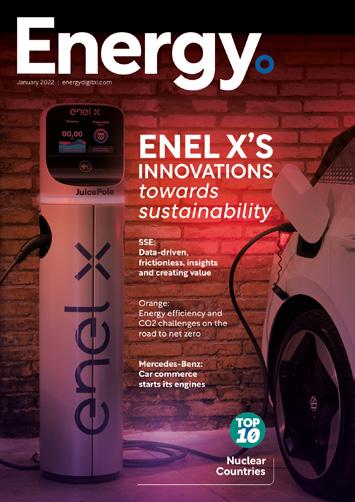



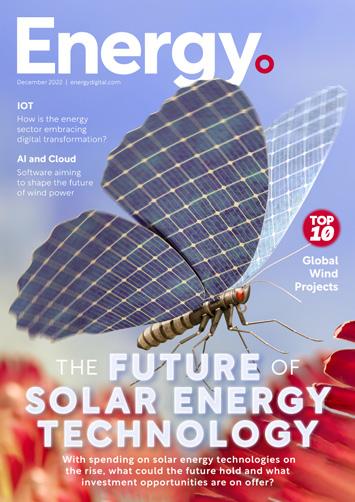










































Energy magazine is an established and trusted voice with an engaged and highly targeted audience of 150,000 global executives


Digital Magazine


Website
Newsletters
Industry Data & Demand Generation

Webinars: Creation & Promotion
White Papers & Research Reports
Lists: Top 10s & Top 100s
Events: Virtual & In-Person
WORK WITH US



Increasingly digital energy infrastructure coupled with global-scale criticality makes energy a significant target for hackers looking to impact networks, supply chains, and ultimately countries.

The past few years have shown us how demand for security has evolved both in terms of cybersecurity — protecting the internet of energy—and physically with the detrimental nature of energy supply chain disruption. The energy sector has become a high-priority target and is impacted by international instability achieving global recognition as a major resource — even more so than in previous years.
As a result, energy is the commodity that everyone is talking about and, in order to avoid global disruption, localising is the necessary solution that can still support worldwide distribution.
 TOM SWALLOW
TOM SWALLOW
tom.swallow@bizclikmedia.com

“Energy is the most vital resource of our time. Renewable energy is that of the future”




24 SHELL
How Shell’s source 2 contract digitalisation and AI boosts productivity

44 INDUSTRY X.0 IOE and digital reshaping the energy sector

54 TOTALENERGIES
TotalEnergies on bitumen supply & sustainable solutions
70 SMART ENERGY
What does a self-driven mobility network look like?

112 TOP 1 0 Energy companies







Investment in renewable energy skyrocketed over recent years and 2023 marks an inflection point between funding for green solutions and the financial backing of fossil fuels. The IEA said this year that annual clean energy investment is expected to reach an increase of 24% for the period of 2021 to 2023, and fossil fuels 9% less growth as it begins its descent into the history books.
While countries demonstrate their commitments to renewable energy adoption, many of them struggled to maintain closures of power plants during current global disruptions, but with US$2.8tn to be invested across the globe by the end of this year, fingers crossed they can close for good.

MANISH NAYAR
TITLE: FOUNDER & EXECUTIVE CHAIRMAN
COMPANY: OYA RENEWABLES
As the Founder and Executive Chairman, Manish Nayar plays a crucial role in charting the course for OYA Renewables’ strategic direction and growth. His expertise and leadership have been instrumental in propelling the company to new heights. What sets OYA Renewables apart is their distinction as one of the few minority-owned and certified enterprises in the energy sector, a source of great pride for the team.
Manish Nayar, Founder and Executive Chairman at OYA Renewables, an energy transition company. Founded in 2009, they are focused on community and utility-scale solar and storage in North America with a nine gigawatt pipeline in tow. As chairman, his role involves steering the strategy and growth of OYA Renewables. They are proudly one of the only minority-owned and certified companies in the energy space.
» We are focused on working with customers to deploy additional energy transition technologies like EV charging, geothermal, and energy storage. We’re a full-service developer, owner,



and operator, acting as a one-stop shop for energy transition solutions. We are also working on developing an Energy-as-aService (EaaS) model that allows customers to mix and match technologies that suit their specific site and portfolio needs. We serve public sector entities, like municipalities, school boards, and development agencies, as well as Fortune 1000 companies across various commercial and industrial industries. For the communities we serve, our aim is to advance access to clean energy, creating more opportunities to electrify fleets, establish more main street charging ports, and provide regional energy services through onsite technologies. For F1000 companies, we’re helping organisations capture some of the benefits from using transition technologies,
like decarbonisation, lower energy costs, and making available energy credits.
» There are larger-than-expected opportunities for both the private and public sectors around the transition to clean energy. Companies can save on energy costs from existing technologies by integrating multiple technologies together, both onsite and virtually. These savings are driven by having more efficient technology that drives a declining cost curve.
As a company focused on solar development and storage, a big opportunity we see is to establish more community solar sites. This can significantly accelerate the

adoption of renewables on the grid, over traditional utility-scale power purchase agreements in large addressable markets.
The conversion of existing on-site technologies such as boilers and heat


At the local level, there can be a lot of pushback stemming from the “not in my backyard” effect. Clearer land use rules need to be passed down at the state level, to create a more homogenous permitting environment. To support international supply chains, we need to establish more prominent domestic manufacturing activities, and clearer trade policies that take into account trade tariffs.
» We need clearer trade policies that enable more international goods to enter the country, while domestic industries are built out to sufficiently meet energy demands. A permitting reform is needed to get renewable tech going faster.
On the infrastructure side, we need more transmission lines built to support more regional sites.
equipment, and get more renewable energy sources contributing to the grid. Establishing a standardised interconnection process for utilities would reduce a lot of friction in the current process.


» Building out solar tech enables more access to clean energy for LMI (low-and-moderate income) communities. As energy and living costs rise, this has ripple effects on affordability and quality of life for households. Customers are becoming more educated and less risk-averse to renewable energy, which is driving more demand for regional solutions to help reach climate targets.




Talk about commitment to the cause. Wirth’s career journey is one of loyalty and service to the multinational energy corporation Chevron. From responsibilities as President, Global Supply and Trading, to his long-standing position as Chairman of the Board and CEO of the company, Wirth has been a part of more than 40 years of development with the business, having entered it in 1982.
He’s at the helm of one of the most established energy firms in the world and takes pride in working with an invested team of engineers, analysts, scientists, business professionals, and environmentalists, to secure energy for the future while delivering a strategy for sustainable transition and long-term energy wealth. From his seat at the table, Wirth has experienced the immense shift in energy over the past four decades, having assisted Chevron’s teams in navigating the many disruptions and transitions taking place in the industry.
It all started for Wirth back at the University of Colorado, where he studied a Bachelor’s
a Board of Directors and Executive Committee Member at the American Petroleum Institute, and also on the Board of Directors at Catalyst Inc.
Alongside these positions, Wirth supports the World Economic Forum’s International Business Council, as well as the National Petroleum Council, and American Society of Corporate Executives — all groups looking to drive change while empowering the industry to take dramatic actions to future-proof operations.

As the CEO of Chevron, Wirth is at the forefront of sustainability and his position enables him to facilitate significant changes to meet future energy trends.

TITLE: CEO

COMPANY: CHERVON
Mike Wirth spreads his time across a number of organisations outside of Chevron, including Catalyst Inc., the American Petroleum Institute, The Business Council US, and other member positions driving positive change in the energy sector. As one of the company’s longest-serving employees, Wirth has always had a vested interest in the future and the transition to sustainable energy makes one of the most significant of his career.
MIKE WIRTH


With one of the highest total carbon emissions on the planet, Chevron holds a major stake in emissions reduction and Wirth’s position is one of great media vulnerability. Nevertheless, at the same time the company must continue to supply energy to uphold the demands of growing and struggling economies.
With global disruption to energy supply an imminent threat, Wirth wrote to President Biden in 2021 to discuss his concerns and the potential downfalls of the sector as a result of the Russia-Ukraine war.

During his time, Chevron has seen some major changes in the energy landscape. Nevertheless, the company strives for reduction in emissions thanks to innovations
incorporating soybean products and used cooking oil, which the company experiments with to determine a renewable diesel supply.
As the company is now in the third year of consistent sustainability and emissions reporting, Wirth is looking to address the climate change challenge head-on while also managing the health and wellbeing of its people and the communities surrounding the business’ activities.

When it comes to emissions reduction, the CEO said in the company’s 2022 Sustainability report: “Lowering the carbon intensity of our business begins with aiming to make our oil and natural gas production among the most efficient and responsibly produced in the world.”
Due to his unwavering efforts to drive Chevron forward and extend its attention to more sustainable offerings, Wirth was recognised as number four of the Energy Digital Magazine ‘Top 10 Leaders’.
“Meeting a growing world’s need for more energy — and more low-carbon options — requires advancing and scaling promising technologies”





WRITTEN BY: ILKHAN OZSEVIM

Leading a transformation to digitise and automate Shell’s S2C (Sourceto-Contract) and E2E (End-to-End) processes, Sander Voorn, the S2C Digital and Process Transformation Design Manager at Shell, discusses how the use of certain digital systems and tools have had a huge and measurable impact on their output.
“My current role is really focused on looking at how we can digitalise,” he says, “and with that, largely automate these processes.”
Voorn has been in procurement for the last 20 years, starting in an internal supply chain management consulting practice and within that role, helping to manage one of the company’s strategic supplier relationships — their technology partner for telecoms. From there, he was integral in centralising their procurement activities, moving into a role to digitalise their contingent workforce spend and activities.
Now at Shell, and describing the interplay of procurement structures and systems that brought this transformation about, Voorn says: “Each business has a procurement function, but they fall under one Executive Vice President, and my organisation supports all of these different businesses


centrally. We have a few key tools to carry out this function. We have our Category Management and Contracting Process framework, which lays out the requirements that everybody needs to meet, which we incorporated into the system, SAP Ariba, which has embedded DocuSign. We also have Salesforce to complement this process, and a few other systems which together operate to manage the entire end-to-end (E2E) process.”
With the rise of digital systems in business, and their inevitable impact on global procurement processes, the effects are considerable.
Voorn says: “The biggest changes have been around centralisation, and a growing awareness of the importance and value of data, and the need to structure and standardise that data in order to extract value from it. The risk-management aspect of procurement has fluctuated a little, but in the last couple of years I’ve seen a growing awareness of its importance not only from a cost perspective, but also from a differentiator perspective.
“The ability to identify viable organisations — that is, who from a risk and ESG perspective we want and do not want to be doing business with — is becoming increasingly important, and I think this trend will continue to grow.”
Growing digitalisation has unmistakable global consequences, according to Voorn: “We are now able to connect the process End-To-End (E2E) that would not have been possible in the past.”
“The key to E2E system and process optimisation and integration is to create Natural Working Teams (NWT) composed of all relevant disciplines. The core of these NWTs consists of the Process Architects from my team, our partners from IT and the
Data Analytics team. These experts make the digitalisation happen!”
One of the main systems in Shell’s entire S2C process is SAP Ariba, where they now manage all of their spend. Describing the process, he says: “From my perspective, it begins with category management. We have categories like contingent workforce, rotating equipment or consulting, for example. These categories are managed by the Category Managers (CMs) who help collect market intelligence and are responsible for providing global steer to a group of buyers.
“The CMs set up these category strategies that detail how we want to go to market. They typically create global framework agreements, which are then made available through SAP Ariba. The next step begins when our buyers are looking to identify demand for a specific contract. They come up with a sourcing strategy, tie this into the global category strategies and leverage the information from them.”
SANDER VOORN
S2C DIGITAL &PROCESS TRANSFORMATION DESIGN MANAGER, SHELL
“MY CURRENT ROLE IS REALLY FOCUSED ON LOOKING AT HOW WE CAN DIGITALISE AND, WITH THAT, LARGELY AUTOMATE OUR SOURCE-TO-CONTRACT (S2C) PROCESS”
TITLE: S2C DIGITAL & PROCESS TRANSFORMATION DESIGN MANAGER
INDUSTRY: ENERGY SUPPLIER
LOCATION: NETHERLANDS
Sander Voorn is the Source to Contract Digital & Process Transformation design manager at Shell where he has led the S2C digital transformation over the past 4 years. During this time the S2C cycle-time was reduced by over 25%. Prior to this, he developed and implemented Shell’s Supplier Performance Management best practices for its Arctic operations. Ensuring safe and efficient performance throughout its supply chain.
Sander’s first global digital transformation was in 2005 when he developed a global programme for the sourcing and management of Shell’s 10,000+ Contingent workforce. The transparency and control this enabled reduced Contingent Workforce cost by USD 60 Mln+ annually.



Winning supply chains achieve breakthrough business outcomes by leveraging analytics automation on internal and external data to develop actionable insight into the needs of customers across product, channels and other factors that influence demand.

Some of the most successful supply chains use Alteryx to improve forecasts, assortment and inventory decisions, and the uptime of in- service equipment:
y Demand Forecasting: Improve on-shelf-availability and avoid out of stock conditions
y Assortment and Inventory Optimization: Operate a competitive supply chain with a clear line of sight
y Predictive Maintenance: Identify and address potential downtime before it arises
We can already see how much of Shell’s procurement process is carried out within SAP Ariba.

“We also review and approve them within SAP Ariba,” he says, “which provides the added benefit of being able to reuse and leverage existing or prior strategies, and we then use SAP Ariba to go to market, eSourcing either auctions or tenders. “We typically provide our suppliers during the tender with our fit-for-purpose contract proposal, in order for them to base their quote on. This draft, too, is created in SAP Ariba, which is done by leveraging
the metadata or the header data of the contract, which identify things like country, commodity, dates, contract value and so on to automatically assemble a fit for purpose contract for that unique situation.”
This is where SAP Ariba’s Artificial Intelligence starts to play a greater role.
“Contract Authoring was a time consuming and non-compliance risk area until we were able to use SAP Ariba Contract Authoring technology. There are about 50 key data points that the system uses to automatically assemble from around 4000 different elements of clauses, in order to determine the right contract for a specific situation. We have about 6 million possible combinations,
and that's the draft that we give to our suppliers to base their bids on. Once we get the quotes back, we finalise the contract agreement, then use DocuSign to get a quick signature on those contracts.”
Once contracts have been signed, they have an automated bot – referred to as an RPA (Robotic Process Automation) – that then releases the outline agreement of the contract on the SAP ERP system, from which the volume of spending for individual contacts is monitored.
The sheer volume and complexity of data that is sifted through and analysed highlights the extraordinary productivity and efficiency that AI is able to achieve compared to its relative human elements. Shell also employs a selection of other (AI) systems to bolster and complete their operations.

One of these is Microsoft Power BI (Business Intelligence), which is used in conjunction with SAP Ariba to allow procurement staff and stakeholders to easily follow contract journeys. A new Suite Dashboard for Shell’s Contract Management Teams (CMTs) is to be implemented into Salesforce, too, where they can see and collaborate on the contract relevant to each party.
Voorn’s position is that, even as part of the Shell procurement process – widely recognised as one of the most effective in the world – it is not yet perfect. And this is, he believes, due to the fact much of it still requires a certain amount of human intervention: “Presently, from a workflow
perspective, contracts are integrated and to a degree, automated. From an Artificial Intelligence (AI) perspective, however, most of the technology that I see is quite limited, and still needs a lot of human intervention.
“AI, no doubt, is able to perform numerous activities, but in reality for many applications it only has around a 60-70% accuracy rate, which means that you still need to have a person double-checking its work, which kind of defeats the purpose.”
He adds: “Truth be told, when people talk about Machine Learning, it's really about training the algorithm. We train the algorithm what is and what is not permitted, by embedding that training (or that learning) into our regular workflows.”
The AI aspect of Shell’s procurement systems is not only able to improve costeffectiveness and operational efficiency, but is also able to free up staff from certain laborious and time-consuming tasks, enabling them to work more creatively, as well as having an impact on ethical procurement.
“If you look at our strategy at Shell ‘Powering Progress’,” says Voorn. “It consists of a number of elements, a key one being ‘Powering Lives’. This means that Shell is concerned with supporting inclusive societies, but it also means making sure that we only ever do business with ethical suppliers, and also that there is supplierdiversity, where we do a lot of supplier development which can take time.
“So, thanks to the AI and automation process, we can free up staff to spend more time finding potentially viable suppliers and to look at how Shell can help these suppliers reduce their own carbon footprint.”

SANDER VOORN
S2C DIGITAL &PROCESS TRANSFORMATION DESIGN MANAGER, SHELL
“THE ABILITY TO IDENTIFY VIABLE ORGANISATIONS – THAT IS, WHO FROM A RISK AND ESG PERSPECTIVE WE WANT AND DO NOT WANT TO DO BUSINESS WITH – IS BECOMING INCREASINGLY IMPORTANT, AND I THINK THIS TREND WILL CONTINUE TO GROW”
When considering ethical procurement at Shell, the company takes time to develop actions and solutions to diversify their suppliers, as well as how to ensure that workers’ welfare rights and ethical standards are not only complied with, but substantially increased.
Artificial Intelligence also plays a significant role in the quality of Shell’s health and safety standards, with Voorn saying: “As part of our process, we ask suppliers about their safety standards and worker-welfare policies. Some suppliers respond, some don't, or don’t do so quickly enough. In order to tackle this problem, we are building bots to ask these questions and to follow them up.
“Once suppliers come back with their Health and Safety and Welfare Policy documents, they need, of course, to be fully read and digested. We typically know what kind of HSE (Health, Safety and Environmental) policy their documents should cover. With AI NLP (Natural Language processing) capabilities, we can see whether this document and their policy is up to a certain standard and whether it meets our thresholds, so we can then determine where there’s a safety risk for a specific category.
As an energy company, Shell is looking at its own CO2 emissions, as well as Scope 2 and 3 – which includes the CO2 footprint of their suppliers. One of Shell’s policies, implemented last year, surrounds the company’s drive to identify those suppliers who want to actively reduce their CO2 footprint, who can then register themselves in the Supplier Energy Transition Hub (a Shell-initiated programme), which Shell has made available as a public application


Shell transformed its contract management and procurement processes with SAP Ariba to keep up with the competitor landscape, streamline operations, cut supply chain costs, and meet evolving customer expectations. However, with a complex new application and outdated training practices, Shell struggled to meet its adoption goals, meaning longer process times, large amounts of support tickets, high training costs, and poor data quality.
With Whatfix’s digital adoption platform (DAP), Shell created a simple application experience with in-app content providing personalized guidance for employees. With in-app elements like step-by-step flows, task lists, and tooltips, Shell provided its contract and procurement departments with engaging onboarding and training, in the flow of work.
With Whatfix, Shell launched its in-app digital assistant, SCAI, which embedded a knowledge base into SAP Ariba - allowing users to search for any applicationrelated questions.
“Whatfix enabled SCAI, which answers the majority of questions related to our contract and procurement processes, hence we don’t have to answer each support question from the frontline! Users ask SCAI anything they need on the contracting process or tool, allowing my team to focus on more important activities.”
With Whatfix, Shell created an intuitive SAP Ariba experience that supported its workforce through complex contract and procurement workflows. Whatfix provided an intuitive point-and-click digital adoption solution that accelerated its SAP Ariba adoption.
Empower your workforce with better in-app experiences and on-demand support with Whatfix!

• 20% reduction in SAP Ariba support queries & 30% reduction in time spent on application-related support tickets
• 100% change communication to all SAP Ariba end-users
• 20 minute reduction in end-to-end cycle time per contract
“Whatfix provides a great way to store information where it’s most needed, reducing the number of users' questions, and simplifying training. It’s a great way to communicate changes - ‘just follow the Whatfix flow!’”
to which any company can join. In turn, Shell then works with these companies to reduce their carbon footprint.
“This is where you see a touch of symbiosis between our suppliers as customers, and our customers as suppliers; nobody can do this alone, what’s needed is collaboration.”
Shell is currently upgrading one of its SAP Ariba modules, called Supplier Life Cycle and Performance Management (SLP). SLP will allow Shell to develop sophisticated supplier profiles, by being able to analyse the qualifications of a supplier’s performance data from a variety of different angles and lenses. Everything from safety to delivery methods, through to their pricing, quality – and even worker-welfare – will be considered. Voorn says: “I think that SLP capability is going to be critical in our ‘Powering Lives’ development, and as partof our Net-Zero ambitions.”
Electrifying energy: Shell’s strategy to move away from Fossil Fuels
Shell has set out a strategy to accelerate the transition of our business to net-zero emissions. “Shell is working to provide more renewable and low-carbon energy options for customers through investments in wind, solar, electric vehicle charging, hydrogen, and more,” says Voorn. ‘For example, Shell is investing in lower-carbon options – from electric-vehicle charging points and solutions to fuels like hydrogen and biofuels.”
Additionally, Shell recently announced that it plans to increase the number of charging points from 80,000 to 500,000 worldwide by 2025.
“We've been recognised on a number of elements of our portfolio, from CIPS (Chartered Institute of Procurement & Supply) and others. With CIPS, it was for our end-to-end (E2E) process,” says Voorn. “Our source to contact (S2C) digitalisation

strategy was recognised due to our global journey, but also due to our position moving forward. We have a fairly high percentage of sourcing that’s done through e-sourcing and e-auctions – when compared to the market standard – with around 88% of our contracts being signed through DocuSign. Just a few years ago, this was very uncommon. We encourage its use at Shell and, once you've used it, you know that it's a better way to go.”
For Voorn, the Salesforce programme that Shell uses has two primary functions: it acts as both a kind of dashboard where data from different sources can be directly

SANDER VOORN S2C DIGITAL &PROCESS TRANSFORMATION DESIGN MANAGER, SHELL
“I HAVE SEEN GREAT CHANGES IN PROCUREMENT OVER THE PAST 20 YEARS. THE BIGGEST HAVE BEEN AROUND CENTRALISATION, A GROWING AWARENESS OF THE IMPORTANCE AND VALUE OF DATA”
pulled, as well as having the ability to jump via embedded hyperlinks into SAP Ariba to a specific task or activity.
Salesforce gives them the ability to collaborate, whereas most Source-toContract (S2C) tools have limited collaboration capabilities. It also allows them to collaborate on documents and pulls in documents and data from other systems, while also pushing these back into SAP Ariba via a systematic record–keeping function. The entire system is streamlined toward higher productivity.
Voorn says: “A big surprise to me was that data analytics with Alteryx identified activities that were being done that didn’t require doing. We then saw the number of contracts that staff could manage increase and the time
it took to complete a contract decrease. The game changer in process optimisation through process mining was when we decided to use Alteryx. We fed the system all our SAP Ariba workflow data which we analysed to identify frictions points, waste and other inefficiencies. This generated very surprising insights that enabled us to close knowledge gaps with some of our users, take out process steps that were not needed, re-engage with key process participants that were ignoring their tasks in the system and were still using e-mail and implement many more improvements. All combined this led to a 25% shorter cycle time and very material reduction in effort by procurement staff and key stakeholders.

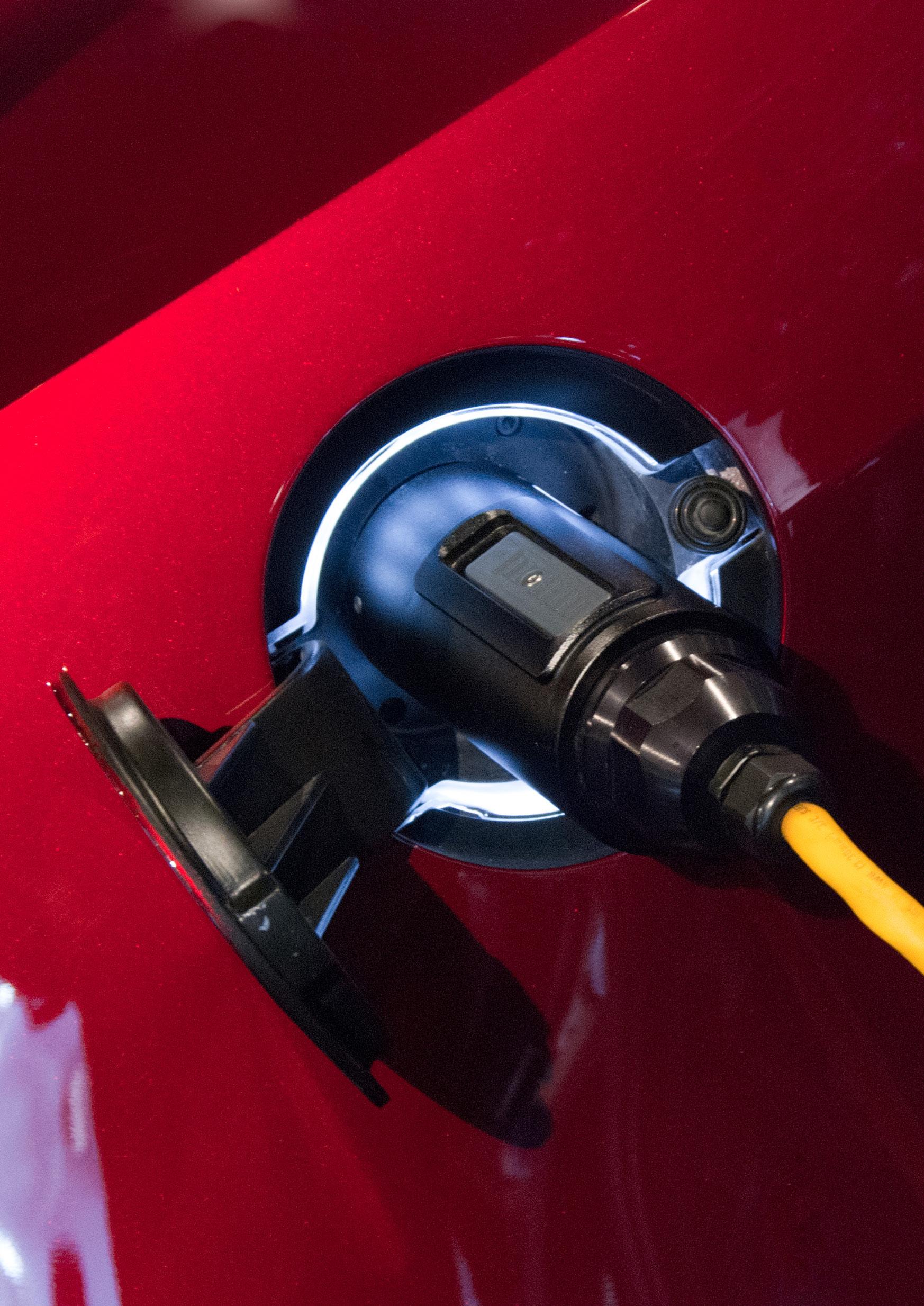
Another programme that Shell uses is Whatfix, which is a digital assistant that’s implemented inside SAP Ariba. Voorn says: “We have about 10 different features that Whatfix can do to help a user who’s, for example, using a feature that's never been used before. Or, if we change something in the system affecting a certain field, they will be notified of this change – and even explain the purpose of that field. Whatfix has enabled us to stop ‘classroom’ training and replaced this with short demos, guided tours, real time tips and similar features. So our users are much more comfortable trying new things because the system will support them. It will also detect in real-time any incongruent data, flag this to the user and guide the user to correct this, avoiding errors further down in the process. This again leads to increased productivity.
The impact of these systems at Shell is palpable. Productivity has been increased and the company is able to react to geopolitical shifts through automation and raising ethical standards while increasing productivity.
Sander Voorn predicts that these trends will continue to grow, serving as a perfect example of the essential nature of digitisation and automation in contributing to the success of any company aiming to thrive in an everexpanding digital landscape.

“ONE OF THE MAIN SYSTEMS IN SHELL’S ENTIRE S2C PROCESS IS SAP ARIBA”
SANDER VOORN
S2C DIGITAL &PROCESS TRANSFORMATION DESIGN MANAGER, SHELL






















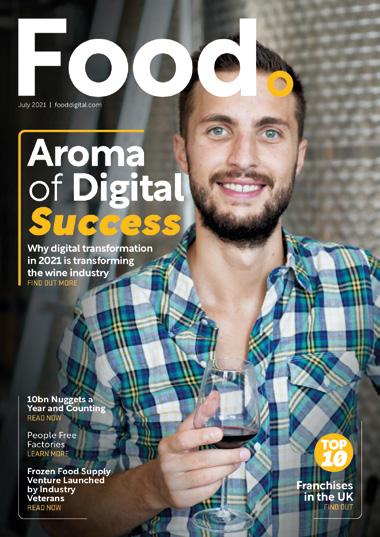















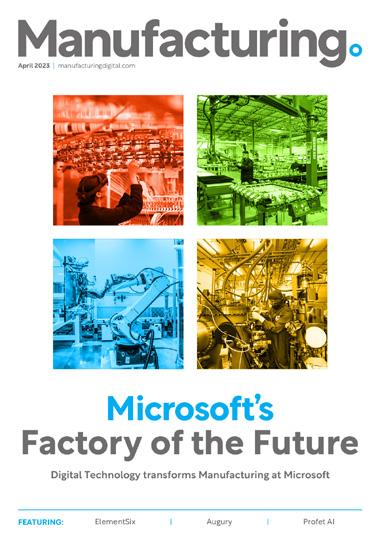





































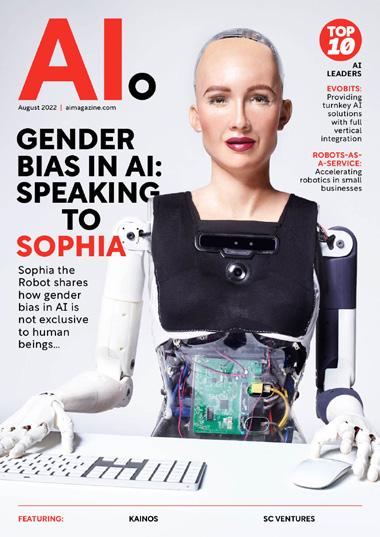















































Living in an era of unprecedented change, the ‘3Ds’ are simultaneously reshaping the energy industry and driving the global energy transition at a much faster rate than previously expected. The drive to become decentralised, to decarbonate, to democratise and to diversify, is pointing the energy sector into one direction — digitalisation.



Industry wide, the energy sector is shifting its focus from economic performance to decarbonisation, shaping innovation, government policy and stakeholder actions.
The reliance on large generation plants is decreasing rapidly, being replaced by a larger number of smaller generators, as well as individual businesses and home generation. This decentralisation of energy is expected to reduce prices, improve security, and reduce emissions.
Such complex changes to the energy infrastructure will require effective management and monitoring, something which digitalisation will play an integral role in.
Unprecedented change is reshaping the energy industry, discover how IoE and digital ecosystems can help navigate the complexities of the industry






A modern network must be able to respond easily, quickly and flexibly to the growing needs of today’s digital business. Must provide visibility & control of applications, users and devices on and off the network and Intelligently direct traffic across the WAN. Be scalable and automate the process to provide new innovative services. Support IoT devices and utilize state-of-the-art technologies such as real-time analytics, ML and AI. And all these must be provided with maximum security and minimum cost.
This is the power that brings the integration of two cloud managed platforms, Cisco Meraki and Cisco Umbrella. This integration is binding together the best of breed in cloud-managed networking and Security.




As such, digital leaders are striving to consolidate their efforts to build a diverse platform ecosystem, leveraging intelligent digital solutions for smart operations. To achieve this, the industry will need to transition from a linear, manufacturingdriven, resource-heavy conventional business model, to a demand-driven, multi-faceted, and digital platform business model.
In order to be an effective space for key players in the energy industry to collaborate, innovate, connect, co-develop, and transact, a platform ecosystem needs to be open, trusted, and transparent to ensure genuine conversations and real problem-solving.
“Digital technology will be fundamental to help us to manage a more distributed, diverse and decentralised energy system. It is already transforming the way we manage our assets today,” said Dan Jeavons, Vice President for Digital Innovation and Computational Science at Shell.

• Finding the right technology solutions

• Access to technology
• Lack of implementation knowledge
• Integration of new technologies
• Slow uptake
• Siloes
• Supply chain issues
“At the heart of it, climate change and digitalisation both require working together and managing change. Getting everyone aligned and moving in the right direction has been one of the main difficulties for climate action. To make digitalisation projects successful, breaking down silos and facilitating cultural change within companies is very important,” said Sophie Borgne, Senior Vice President of the Digital Power line of business at Schneider Electric.

TITLE: VP FOR DIGITAL INNOVATION AND COMPUTATIONAL SCIENCE

COMPANY: SHELL
LOCATION: INDIA
For more than 15 years, Dan Jeavons has been a key contributor to Shell’s digitalisation programme. Over the years he has been recognised for his leading work in digital transformation, and was listed in the Constellation Research #BT150 and Truata’s Top 100 Data Visionaries.
The third industrial revolution: energy internet – ‘internet of energy (IoE)’
Devised by Jeremy Rifkin, the ‘third industrial revolution’ furthers the digital platform ecosystem offering the energy industry the opportunity to create an ‘energy internet’ of a smart, responsive, sustainable, and decentralised network of energy and information. Such a network would create millions of jobs and help to eliminate energy poverty.

Based on multi-directional flows of renewable energy and supported by the digital revolution, the ‘internet of energy (IoE)’ uses the internet of things (IoT) technology combined with a variety of energy systems to reduce inefficiencies in existing energy infrastructure by increasing generation, transmission, and use of electricity.

What makes IoE different from IoT? IoE builds on the principle of IoT to provide people with the necessary data to optimise, manage and automate the power grid. Using IoT devices such as smart sensors and communication technologies to connect every point within the power grid. IoE creates an ecosystem to support the power grid’s ability to operate more efficiently, resilient, and reliable. IoE removes barriers when it comes to the flow of information transitioning from a two-way flow, to a multi directional flow of information.
When it comes to successful application of IoE, the solution depends on four core pillars: people, data, things, and processes.


TITLE: SENIOR VP OF THE DIGITAL POWER LINE OF BUSINESS

COMPANY: SCHNEIDER ELECTRIC LOCATION: UNITED STATES
Sophie Borgne has a passion for digitalisation, focusing on power and energy management solutions. She has been a part of Schneider Electric for more than 20 years dedicating her career to the acceleration of digitalising power distribution with intelligent sensors and devices, EPMS software, cloud apps, and analytics.




IoE automates and upgrades the energy infrastructure with the help of artificial intelligence (AI) to allow the exchange of big data. Adding IoE technology to the process not only eases the flow of energy and maximises its potential, it can also lead to the installation of smart grid technology, allowing users to create an integrated communication ecosystem to control power and electrical flow, measure usage, monitor health in their systems, and automate their systems. Smart grid systems also allow users to make better business decisions and forecasts.
What’s more, IoE enables the successful incorporation of renewable energy sources into the ecosystem and with climate change driving the need for renewable energy generation, IoE bridges the gap between both home and commercial generation and the rest of the grid. Ultimately the use of IoE and digital platforms and ecosystems with the energy industry will drive change within the industry, overcoming challenges to become more efficient, more reliable, and reduce both production and



Digital technology will be fundamental to help us to manage a more distributed, diverse and decentralised energy system”





















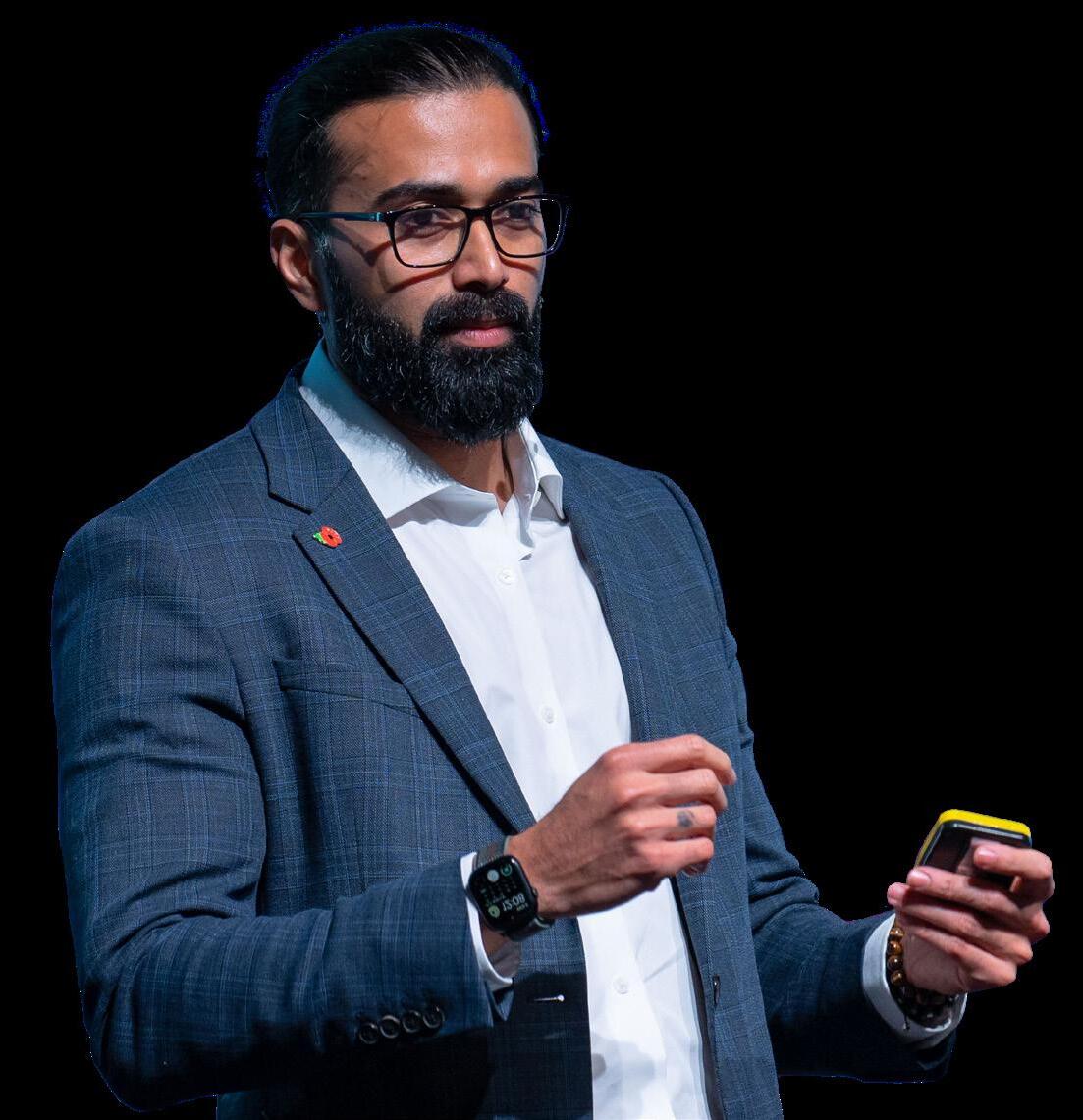

 WRITTEN BY: HELEN ADAMS
PRODUCED BY: CRAIG KILLINGBACK
WRITTEN BY: HELEN ADAMS
PRODUCED BY: CRAIG KILLINGBACK



TotalEnergies is a multi-national energy company, founded in 1924 in France. Previously known as Total, in 2021 the Company rebranded as TotalEnergies –in line with its transformation into a broad energy company and a world-class player in the energy transition, including through its own carbon neutrality commitments. TotalEnergies has activities in more than 130 countries worldwide.
TotalEnergies is one of Europe’s largest producers of bitumen and its affiliate, TotalEnergies Marketing UK, has been a market leader in UK bitumen supply for decades, including through the supply of pioneering bitumen products manufactured in its Preston production site. Bitumen is the black viscous substance used to construct roads.

Garr Chau is the Supply Chain Manager for TotalEnergies Marketing UK, a role he landed through a graduate scheme.
“My role involves overseeing a team of planners and the supply of bitumen and additives to our supply locations, imported via ship, rail and road, in addition to road deliveries of bitumen products to our customers from those supply locations.”
TotalEnergies is transforming into a broad energy company and has committed to the Paris Agreement and the United Nations Sustainable Development Goals.
“We have an ambition and that is to help with the world's energy transition, to reinvent the production and use of energy and to reach Net Zero by 2050 together with society,” says Chau.
TotalEnergies has set objectives to reduce its emissions.
The first step is to reduce Scope 1 and 2 CO2 emissions from TotalEnergies’ worldwide operations.
“We've set ourselves measurable short, medium, and long-term goals - so, by the year 2030, we've committed to reducing Scope 1 and 2 emissions at our own facilities by over 40% versus 2015 levels,” explains Chau.
In addition to decarbonisation, the company seeks to achieve this through improving efficiency across all operations, as well as achieving zero routine flaring at refineries, cutting methane emissions leaks in its gas operations and also by investing significantly in carbon capture and storage capacity as well as natural carbon sinks.
TotalEnergies has also set a 2030 target to reduce its global Scope 3 emissions - i.e. those from the energy products used by its customers - to below 2015 levels.
“The way we can influence this is to work with society - our customers, suppliers, partners and public authorities. We have

“
The impacts of climate change are irrefutable”
GARR CHAU HEAD OF SUPPLY CHAIN, TOTALENERGIES MARKETING UK LTD.
to transform the way that we all use energy so that we can be sustainable.”
“We are changing our energy mix as a company, hence why we are transforming from being an oil & gas company into an integrated and broad energy company. We are reducing the carbon intensity of petroleum products sold by more than 30%, whilst we also plan to produce and sell 30% more energy products, especially through growth in electricity and liquefied natural gas (LNG). LNG, in particular, is a very important fuel in the transition, as the lowest carbon fossil fuel,” says Chau.
The UK has recently witnessed extreme weather events, first with the heatwaves and then with resulting scenes of flash floodingexamples of how our climate is changing.
“The impacts of climate change are irrefutable,” says Chau. “The general public expects governments and large companies, like TotalEnergies, to act on this. In Europe, around 80% of greenhouse gas emissions come from energy production and consumption, so energy producers have a vital role to play.”

DR. GARR CHAU
TITLE: HEAD OF SUPPLY CHAIN
INDUSTRY: OIL & ENERGY
LOCATION: PRESTON, UK
Garr Chau is currently the Head of the Bitumen Supply Chain for TotalEnergies Marketing UK Ltd, where he’s responsible for: primary supply via ship and rail import; stock management and quality control of the 3 terminal locations; and ensuring the safe and cost efficient distribution of finished products to TotalEnergies’ bitumen, PMB and emulsion customers.
During his 17-year career at TotalEnergies, Garr has (amongst other roles) served as: a Chemical Engineer at the Lindsey Oil Refinery, responsible for energy optimisation of the combined heat and power (CHP) unit, steam methane reformer (SMR) unit, fired heaters and boilers; Operations Manager of the long distance pipeline and aviation assets; JV Director of the HOSL terminal operation;
1955
Year founded 250+
Number of employees
responsible for safety and mitigating the environmental impact of the bitumen business.
Garr earned both a PhD and MEng in Process Engineering from University College London

Are you looking for an agile, flexible logistics partner with highest quality and safety standards? Do you appreciate expertise that moves you forward? The HOYER Group is one of the world’s leading logistics services providers in handling and transporting liquid products. We are the first point of contact for the chemicals, petroleum products, gas and foodstuffs industries. By road, rail and sea – with our extensive global network we will find the optimum solution for you. We maintain our leading market

position in the petroleum products sector through outstanding safety, environmental and customer service performance. Driving achievement in logistics is part of our DNA. With our sophisticated full-service logistics (from remote stock management to completion of the transport delivery) we make our customers’ business easier and more successful. Together we break new ground in a customised way
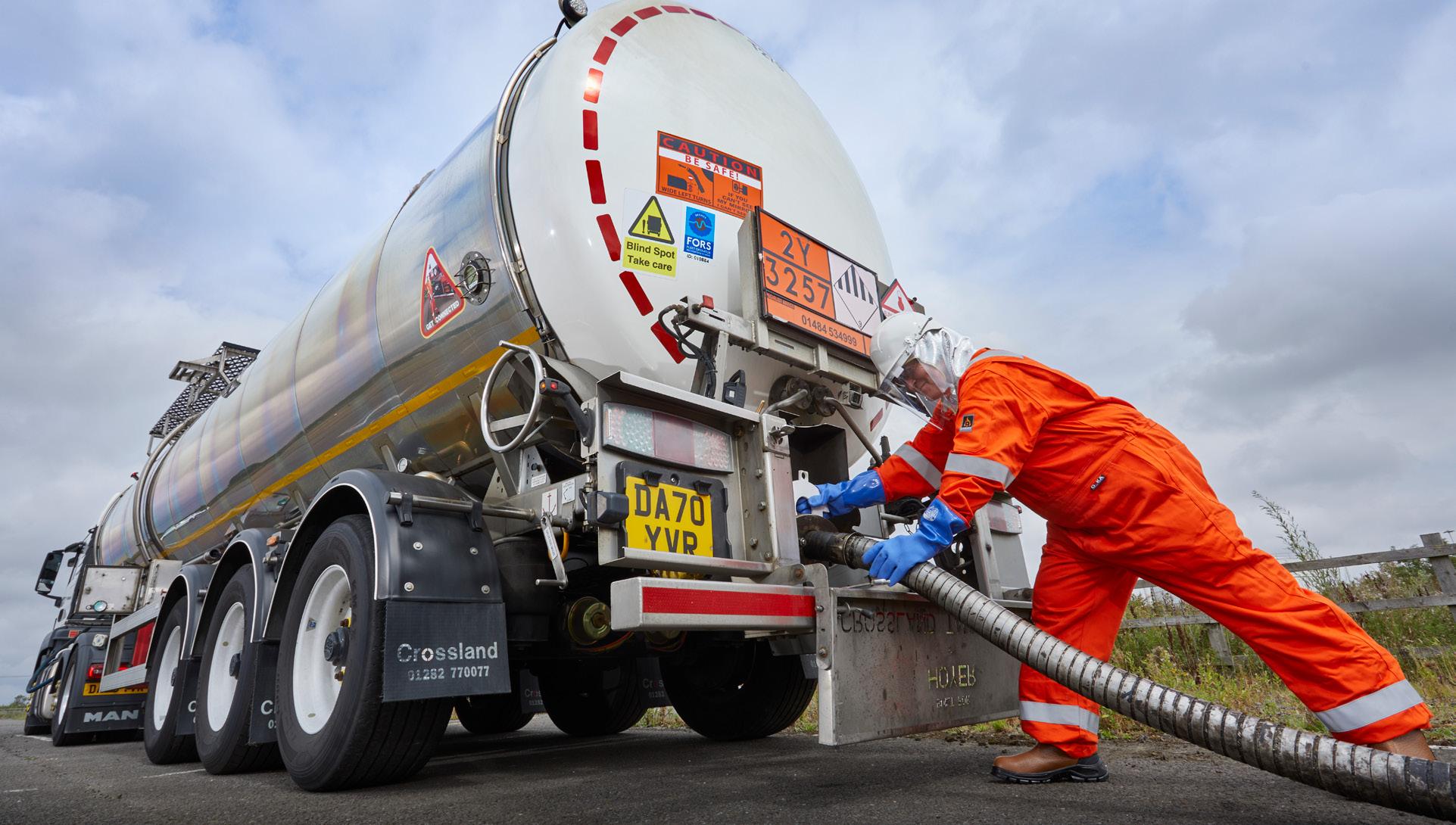
TITLE: MARKET DEVELOPMENT MANAGER
INDUSTRY: OIL & ENERGY
LOCATION: PRESTON, UK
I started in the sector in 1989 in an aggregates and asphalt testing laboratory with Hanson covering quarrying and asphalt operations. I studied construction materials technology with Bath College, then quarrying and asphalt technology with Doncaster College. I joined Aggregate Industries as a Technical Manager, managing on-site asphalt testing, laboratories, and various R&D projects before joining TotalEnergies as Market Development Manager in 2011. My role involves marketing communications, technical liaison, market development and representing TotalEnergies at international conferences and seminars. I’m a member of the Chartered Institute of Highways and Transportation, Institute of Quarrying, and a Branch Chairman of the Institute of Asphalt Technology. Also, the Asphalt Industry Alliance PR Committee liaising with ‘The All-Party Parliamentary Group for Better Roads’ and have assisted BSI working groups in the writing and publication of the current UK Asphalt standards.
According to Rick Ashton , Market Development Manager at TotalEnergies

Marketing UK, offering customers a range of sustainable solutions is essential in modern
One such solution is the increased adoption of low temperature bitumen that can be used in warm
“The focus at the moment is lowering the temperature of asphalt,” Ashton explains.
“Conventional asphalt is mixed at around 180°C and that takes a lot of energy. If we can lower the manufacturing temperature by chemically

modifying the liquid bitumen, we can reduce the energy demands by up to 30%.”
Representing TotalEnergies, Ashton is also working alongside industry bodies towards net-zero carbon goals and contributing to CO2 reduction in the UK.
“The All-Party Parliamentary Group for Better Roads put together a report for all the local authorities in the country on how to support this.

“The report claims if all asphalt production in Great Britain for 2017 had been switched to warm mix asphalt, it would have saved at least 61,000 tonnes of CO2 – the equivalent of cutting almost 300 million miles of car journeys. (Citation: Working for better roads Warm Mix Asphalt: reducing carbon emissions and improving efficiencies)
“When you mix the materials 30°C lower, it means products are cooler to install. This allows faster roadworks as the asphalt can cool to a point where it won’t be too soft to traffic causing deformation. You use less energy to heat the product, because a big part of the energy used in asphalt production
“
The focus at the moment is lowering the temperature of asphalt”
RICK ASHTON MARKET DEVELOPMENT MANAGER, TOTALENERGIES MARKETING UK LTD.
TotalEnergies has committed to reducing its Scope 1 and 2 emissions by over 40%


TotalEnergies is reducing the carbon intensity of petroleum products sold by more than 30% Around 80%
of greenhouse gas emissions come from energy production and consumption
is to get the product to a workable state. Our low temperature ECO2 bitumen, for example, allows the same workability at 140°C - or 40°C cooler.”
Ashton says that this will support road workers, too. “It's a safer environment for them because they're not walking or driving through steam when there's live traffic going past just on the other side of the traffic cones.”
The TotalEnergies team conducted trials to measure the typical cooling times of asphalt. For a traditional hot mixture, a layer can typically be 100mm thick and it will take
two hours in normal ambient temperatures before traffic can run on the asphalt. Lowering the temperature by 40°C can halve this cooling time.
“Our customers may only have a five-hour slot where they can get in there and actually do the roadworks on a local urban road,” explains Ashton. “If they can add an hour's surfacing into that slot or get the road open an hour quicker, it's a 20% efficiency benefit.”
National Highways, who manage the motorway and trunk road networks, also estimate that an increase in shift outputs of 20% could be provided by using this technology on its network, saving up to £70mn a year. ( Citation – Report, The AllParty Parliamentary Group on Highways: Working for better roads Warm Mix
Asphalt: reducing carbon emissions and improving efficiencies. )
“Society needs to focus on ways to reduce energy consumption and it’s the case with prolonged road works and wasted energy if using conventional hot mix asphalt. We know our low temperature energy saving ECO2 products stop this waste.”
Asphalt is the most recycled material globally and, like its hot mix equivalents, TotalEnergies ECO2 is also 100% recyclable back into asphalts in the future, giving further embodied CO2 reduction benefits, helping to prevent waste and conserving natural resources as less aggregate needs to be quarried.

Styrelf® is one of TotalEnergies’ premium products. The name comes from adding a cross-linked polymer into bitumen, called styrene.
“It’s historically been used in high profile sites like at the Monaco Grand Prix
Circuit and the Mersey Gateway Bridge. We perform a huge amount of research and development, both here in the UK and in Europe, and the last 30 years have seen continuous improvement for these products,” explains Ashton.
A new grade in development, Styrelf® Long Life, aims to delay the onset of roadworks. Historically, highways engineers have to predict how long a road will last before potholes begin to form and a road needs to be repaired.
“It’s oxidation that makes the surface more brittle, and eventually it cracks. As it cracks, water gets into the cracks, they get bigger - then you've got a pothole, which somebody needs to repair. To do that, you’re going to have to cause disruption.”
TotalEnergies is working with local authorities and those responsible for maintaining roads on this matter. To get things moving, Ashton is involved in a number of industry bodies such as being a branch Chairman of The Institute of Asphalt Technology (IAT).
We have an ambition and that is to help with the world's energy transition, to reinvent the production and use of energy”
UK LTD.

If we can lower the manufacturing temperature by chemically modifying the liquid bitumen, we can reduce the energy demands by up to 30%”
RICK ASHTON MARKET DEVELOPMENT MANAGER, TOTALENERGIES MARKETING UK LTD.
Then there’s a group called the Asphalt Industry Alliance (AIA) whose purpose is to promote the benefits of asphalt. This is a joint venture between the Minerals Product Association and Eurobitume UK, the two principal bodies that represent the suppliers of the raw materials used to produce asphalt, as well as asphalt producers and laying contractors. This then feeds into central government via the All-Party Parliamentary Group for Better Roads.
TotalEnergies has a partnership with transportation and supply chain company Hoyer Gas & Petrol Logistics Limited, which provides services to the company in the form of planning, safe loading, road transport and delivery of bitumen products to its UK customers.
“TotalEnergies was Hoyer’s first client for bitumen transportation in the UK,” says Chau.

“I'm proud to say that a lot of expertise, experience and procedures have been developed in collaboration between TotalEnergies and Hoyer.”
Chau states that Hoyer understands the vital ingredients for a successful partnership.
“It's strong and good quality communication that can only come through trust and mutual respect. That communication needs to be strong on all levels of management and day-to-day operations. If that communication breaks down on any one level, then things can quickly go awry”.
The next 12 months will continue to be interesting for the supply of bitumen into the UK.
In the wake of the Russian invasion of Ukraine, the government announced that the UK would sanction crudes and petroleum
products of Russian origin from the end of this year.
“What that means for the bitumen world is quite significant because Russia has been important for bitumen in Europe. So this presents some challenges for the industry and supply chains need to evolve and adapt.”
TotalEnergies is moving with the times and transforming its bitumen supply chain across the UK. In the future, it is expected that more bitumen will need to be imported into the UK, potentially from further afield.
“We're extending our partnership with Navigator Terminals, a very large independent bulk liquids storage provider. We are expanding through a new position in Teesside in addition to an existing facility we have with them in London, for importation of bitumen by sea."
The combined storage of the positions will give TotalEnergies significantly more storage capacity.
In a testament to TotalEnergies’ longterm commitment to its bitumen customers, these assets will ensure TotalEnergies’ bitumen supply into the UK is truly national and resilient.
The Global Sustainability Awards 2024 will be celebrating the very best in Sustainability & ESG with the following categories:

Sustainability Strategy Award
–
ESG Program Award
–
Climate Change Award
–
Diversity & Inclusion Award
–Net Zero Award
–
Sustainable Supply Chain Award

–
Sustainable Technology Award
–
Sustainable Consultancy Award
–
Future Leader Award
–
Executive of the Year Award
–
Project of the Year Award
–
Lifetime Achievement Award

Integrated technology in the energy network allows for greater possibilities and autonomous mobility is one of them with added efficiency benefits
 WRITTEN BY: TOM SWALLOW
WRITTEN BY: TOM SWALLOW
Arevolution is underway in the transportation industry. While it may still seem as though it’s years away from fruition, the rate at which e-mobility and technology evolve these days is to be watched as self-driving automobiles enter the ecosystem.
Of course, this is happening in various different forms and not everybody will need to jump ship at the first sight of technological change, but it’s expected that some form of technology will assist drivers in some way, shape or form. That could either be a result of advanced driver assistance application, or simply the use of ride-hailing services without the need for a driver.
As technology advances, the concept of smart cities is becoming a reality and transforming the urban landscape. Selfdriving cars will soon be integrated into this new reality, linking services incorporated under the smart-city umbrella.

Goodbye congestion and hello seamless transportation
One of the main benefits that self-driving cars bring to the world is the potential for connected traffic management systems, acting on overwatch across cities. With the ability to communicate with traffic infrastructure, as well as each other, in real-time, autonomous vehicles (AVs) can optimise traffic flow and reduce congestion. AI-powered algorithms analyse a vast amount of data, including patterns of traffic, weather conditions and reports, and provide real-time visibility to inform traffic decision-making much faster.
“Connectivity and data are vital elements to influence the evolution of e-mobility.

First of all, it helps us understand urban mobility infrastructure better,” says Carlo Ratti, Professor of Practice of Urban Technologies and Planning at MIT.

TITLE: PROFESSOR OF PRACTICE AND URBAN TECHNOLOGIES AND PLANNING
COMPANY: MIT
LOCATION: LONDON
Teacher at the Massachusetts Institute of Technology, Professor Carlo Ratti directs the Senseable City Lab who graduated from the Politecnico di Torino at the École Nationale des Ponts et Chaussées, Paris.
Ratti is the author of more than 500 publication, which highlight the breadth of his research, and his work has been featured in some esteemed venues across the globe, including the Venice Biennale, the Design Museum in Barcelona, the Science Museum in London, and the Museum of Modern Art in New York.
“Furthermore, data can be leveraged to forge an overarching mobility system in which e-mobility plays a central role. In this scenario — we call it the ‘Moving Web’ — a digital platform aggregates data about all mobility solutions — buses, trains and other vehicles — and broadcasts it in real time through a mobile app. Commuters can use it to identify the optimal commuting options and reserve all the trips in one go.”
While many would presume that selfdriving cars are directly responsible for their reactions on the roads, signals and data from surrounding infrastructure provide more data points on which to base their decisions. Combining insights from the world around them while assessing scenarios internally means that cars will be much better informed than their drivers or passengers.
That’s not to discredit the work of autonomous vehicle creators, as they are incredibly powerful vehicles. With the ability to assess millions of data points accessed via camera, radar and lidar solutions, AVs consistently look to find the most energy-efficient routes based on the road they see in front of them. In fact, if autonomy were available for ICE vehicles, dare we say there might have been a significant impact on the amount of carbon emissions in the atmosphere today.

“We can already imagine a not-toodistant future of self-driving cars”
CARLO RATTI PROFESSOR OF PRACTICE OF URBAN TECHNOLOGIES AND PLANNING, MIT

According to some studies, autonomous vehicles have the potential to improve fuel efficiency by up to 20%, which is a result of smoother operation and optimal speeds for the journey. From an EV perspective, AV technologies help drivers make their most of their energy and inform them when it really is time to charge.
Looking at the EV landscape with a broader lens means city planners will consider electrified and autonomous vehicles in their endeavours. With the introduction

of shared mobility, regulations and demand are likely to shift towards more publicly available means of transport, which will reshape the way people navigate cities.
Understanding the routes that AVs take and how they interact with their environments could drive strategies and plans for charging locations, thus optimising the routes for autonomous taxis and the energy consumption of such services.
“Self-driving cars can promote car- and ride-sharing, hence changing urban mobility,” says Ratti. “Also, they can have a major effect on urban infrastructure.
“Data can be leveraged to forge an overarching mobility system in which e-mobility plays a central role”
CARLO RATTI PROFESSOR OF PRACTICE OF URBAN TECHNOLOGIES AND PLANNING, MIT
“Sensor-laden self-driving vehicles, which can communicate with one another to maintain safe distances, will need less assistance at road crossings. As a result, slot-based intersections, modelled after air traffic control systems, could replace traffic lights.

“On approaching an intersection, a vehicle would be assigned an individualised time, or ‘slot’, to pass through the intersection – increasing throughput and making better use of the urban infrastructure.”
This shift also aligns with developing infrastructure for cyclists as smart cities
also incorporate docked cycling and scooter arrangements to provide consumers with simple, nimble transport options.
“We can already imagine a not-toodistant future of self-driving cars where your vehicle can give you a lift to work, and then, instead of sitting parked until you return home, give a lift to someone else in your family, or anyone else in the city,” Ratti explains.
“The combination of the two above phenomena – car-sharing and ride-sharing – could drastically reduce the total number of cars in a given city.”

 WRITTEN BY: ALEX CLERE
PRODUCED BY: MICHAEL BANYARD
WRITTEN BY: ALEX CLERE
PRODUCED BY: MICHAEL BANYARD

In recent years, Yorkshire Building Society has undertaken a transformational journey –one that starts and ends with the customer
When Yorkshire Building Society’s (YBS) Chief Commercial Officer, David Morris, and Director of Business

Transformation, Ben Sampson, join me to discuss the seismic change that the mutual has enjoyed over the last five years, there’s more than 100 miles between them. Morris is joining from Oxfordshire in the south of England, while Sampson is dialling in from Halifax in the north. It’s a sign of the times – in business today, it’s not unusual for colleagues to be separated by postal codes, time zones or even oceans. But it’s also a mark of how far Yorkshire Building Society has come since it was founded in 1864.
YBS can trace its roots back more than 150 years to the Huddersfield Equitable Permanent Benefit Building Society, whose members would meet each morning from 5-8am – not on Zoom, but in a single room in the Yorkshire town. Early directors of the society included a dentist, a shoemaker and a plumber. At the end of the first year, there were just six borrowers and assets of around £4,000 – over £400,000 in today’s money.
The name itself stems from the West Yorkshire Building Society, which was founded two years later in Dewsbury –a short six-mile hop from the town of Huddersfield. For over 100 years, the two building societies operated in separate orbits – orbits that would rarely stray outside this small, 10-mile patch of northern England. In 1982, the West Yorkshire Building Society



and the Huddersfield Building Society merged with another local mutual, the Bradford Building Society, to create the entity that exists today.
It is a history of consolidation: in the years after the merger, the newly rebranded Yorkshire Building Society would gradually accumulate more of its peers from across the UK, slowly increasing its sphere of influence and growing steadily in size. The Haywards Heath, Barnsley, Chelsea, and Norwich & Peterborough Building Societies were all subsumed into YBS and today the group has a balance book in excess of £55bn.
Being local and mutually owned means that Yorkshire Building Society is motivated by its members, not by a distant shareholder who they’ve never met. Everything that YBS does is for the service of its members.
“I don't actually think we are local at all anymore,” Morris says. “We've got a national branch network, a sophisticated digital footprint across all our brands and we've obviously got customers from all over the British Isles. We've got customers in Northern Ireland, Scotland, Cornwall, and a huge London presence.”
Instead of thinking local, YBS today thinks about local values. It has expanded far beyond Yorkshire’s borders, but the organisation is still proud of its heritage and
is committed to upholding the traditional values that are said to define this beautiful part of the world: humanity, empathy, honesty, and a sense of doing the right thing.
“I’m a proud Yorkshireman. I'm a local lad,” says Ben Sampson. “I love coming to work at the Yorkshire Building Society because whilst we're national and we make a national impact, I think the culture and the roots of the business feel very Yorkshire. If you ask a Yorkshireman what they think about being from Yorkshire, they'll use words like openness, integrity, fairness and honesty – and I think we have a culture that really thrives on that.”
• Historical area of northern England made up today of four counties
• Nearly 15,000km² ranging from peaks and dales to heritage coastline
• Major cities include Leeds, Bradford, Sheffield, Hull and York
• Renowned for its food and drink including strong tea, batter puddings, Wensleydale cheese, Pontefract liquorice, and its forced rhubarb
• Population according to the 2021 UK census: 5.5mn
“ I’M A PROUD YORKSHIREMAN . I LOVE COMING TO WORK BECAUSE, WHILST WE MAKE A NATIONAL IMPACT, THE CULTURE AND THE ROOTS OF THE BUSINESS FEEL VERY YORKSHIRE”
BEN SAMPSON, MBA DIRECTOR OF BUSINESS TRANSFORMATION, YBS


TITLE: DIRECTOR OF BUSINESS TRANSFORMATION
INDUSTRY: FINANCIAL SERVICES
LOCATION: UNITED KINGDOM
Ben began his career at HBOS and worked in various business areas until 2008 when Lloyds TSB took over during the financial crisis. At the newly formed Lloyds Banking Group Ben undertook significant roles in both the Integration and Verde (TSB creation) programmes. Since Joining YBS Ben has led a number of high profile programmes of work that have helped transform and modernise the society, such as the lending re-platforming work to move YBS to the IRESS MSO platform. In his current role as Director of Business Transformation, Ben is responsible for the strategic design, business case and planning of the YBS transformation. This includes overall sponsorship and ownership of the benefits and benefits for the programme and accountability to the Executive and board.



UNITED KINGDOM
David began his career at Citigroup and has subsequently worked at various Financial Services institutions across the UK and abroad. He is responsible for the innovation, development and ongoing management of the Society’s mortgages and savings products, YBS’s marketing and its digital channels, mortgage distribution and the Society’s branch network. David is also responsible for our Commercial Lending and is Chair of Accord Mortgages Ltd. Prior to joining YBS David was the Head of Products at Coventry Building Society.



In every organisation’s history, there are usually a few executives that have a defining impact. For YBS, one of the most influential was Mike Regnier, the erstwhile chief executive who left to become CEO of Santander UK at the beginning of 2022.

David Morris says: “What Mike did was come in and effectively provide quite a lot of strategic clarity in terms of what we can and can't be. We need to be a savings and mortgage business and we need to get simple, lean, and focused. That's really been the mantra over the last eight years. What we've seen since about 2018 is an acceleration of that vision.”
Yorkshire Building Society focuses on mortgages, savings products and commercial lending, shying away from everyday transactional banking (which is highly regulated with a lot of competition) in favour of higher-interest products that encourage consumers to put some of their money aside. That means YBS has three core lines of business, which Morris describes as “low-touch but meaningful”. The company is one of the largest lenders in the UK: “We’re very big but we’re focused,” he explains.
The sheer scale that YBS has been able to achieve is testament to the laser-tight focus within the business. “We want to make sure we're doing things purposefully; we want to make sure we've got the capability to execute against that; and critically we only compete in parts of the market where we think we can win,” Morris continues.
On mortgages, this means a higher proportion of its lending goes to firsttime buyers or customers who are often overlooked by other providers. This allows them to occupy the underserved space in between other mainstream lenders, carving out a competitive advantage for themselves. “They’re good people but for whatever reason other banks are not providing solutions that help them get on the housing ladder,” Morris says. YBS still lends to more affluent customers who have higher equity in their homes, but they are clear that the
“ I FIND MYSELF ENGAGED BY PEOPLE WHO ARE ABLE TO BREAK PARADIGMS, THINK DIFFERENTLY AND LIFT THEMSELVES OUT OF THE STATUS QUO ”
DAVID MORRIS BA, MA CHIEF COMMERCIAL OFFICER, YBS
business’ focus is on being purposeful and finding innovative solutions.

This incisiveness and clarity of focus, coupled with the fact that YBS is “just a building society”, often leads to people underestimating their scale or level of expertise. Morris says: “I think the YBS of today is far more capable than people realise. It's very interesting when you go out into the market and people say, ‘oh you're a building society, do you know X’ or ‘do you know Y’? Of course we know it, we're really very good. It's just we're very, very focused.”
This clarity of focus is clearly winning: in H1 2022, YBS outperformed some of the UK’s traditional ‘big six’ banks in terms of

“ WE HAD A GOOD PHYSICAL BUSINESS MODEL , GOOD BRANCHES, BUT WE WERE REALLY LAGGING BEHIND ON BOTH TECHNOLOGY AND DIGITAL PERFORMANCE ”
BEN SAMPSON, MBA DIRECTOR OF BUSINESS TRANSFORMATION, YBS
both book growth and yield performance. It is also highly competitive now on digital. Morris believes that there are other financial institutions who could learn from this focused strategy.
When you think about digital transformation, you tend to think about the process of replatforming and the multiple legacy systems that often hold firms back. That is one of the key tenets of digital transformation after all. But, as with any sizeable undertaking within a business, the most important thing to get right from the outset is strategy. It can be a challenge to get everybody within a business subscribed to a digital transformation – it requires a huge
cultural shift – but it can also be difficult to get all your objectives aligned.
When Director of Business Transformation Ben Sampson joined the business, YBS had an ageing legacy platform powering its websites; it didn’t have a consumer app; and the percentage of customers signing up through digital was somewhere between 15% and 20%.
It’s not an atypical hangover for a building society to have; indeed, according to research from the Building Societies Association published in 2021, twothirds of building societies identify digital transformation as the main challenge facing the sector in the next five years.

“We had a good physical business model, good branches,” Sampson says. “But we were really lagging behind on both the technology front and the digital commerce performance front.”
First, Yorkshire Building Society established a single vision and ambition organisation-wide that everybody was aligned to. Digital transformation has proven to be a considerable, long-term investment for the business – the single biggest programme of work that YBS has ever done, as Sampson puts it. “That’s as significant as the replatforming for me,” he says. “A business that gets unified behind that single goal, which can then lead to all the important elements of conditions for success such as the ability to have razor-sharp prioritisation discussions. They’re not possible if you’ve got different viewpoints, because it just becomes an argument.”
YBS built and launched its first native apps for iOS and Android, getting into the pockets of its customers for the first time. The demand has always been there: research shows that a majority of UK banking customers want their banks to offer
mobile apps. It established a partnership with identity confirmation provider HooYu, allowing it to elevate its onboarding and ID verification process. Together, they developed a programme called “experiencedriven acquisition”, which involved building a more seamless account opening process. Alongside the partnership with HooYu, YBS also redesigned some customer journeys and replatformed to make this project work.
YBS has also invested heavily in modernising its mortgage origination system. A new platform was introduced in 2018 and through the programme this has been extended, adding the remaining products one by one. Significant time has also been spent optimising this tool, working with technology partner Iress to create innovative solutions and leverage its capabilities. Permanent squads were also set up, allowing technical expertise and strong relationships with the supplier to develop. The result is that the speed of change has increased by 300%.

Morris says this has had a huge impact on the business: “When I started at YBS I saw our mortgage business had lots of potential. I think it is easy to overlook the impact of our transformation here but, for me, this has been the spark that enabled the broader transformation. With our mortgage engine firing, we have been able to subsequently transform our savings proposition and invest further and faster in our digital transformation.”
The results have been staggering, the company says: digital acquisition has gone from 20% of the mix to over 70% and the online book is over 2.5 times bigger than it was before the transformation began; over 20% of lending originated utilises the new capabilities the transformation delivered; and digital satisfaction has increased by over 40% in the last 12 months alone.
It also transitioned away from waterfall development, which just wasn’t cutting it with the modern digital technologies, and created a ‘digital services tribe’ instead. It was the first time that YBS had attempted to work in that agile way at scale, so clearly the technical undertaking itself was vast. But it all stemmed from a single collective vision that helped to clearly define the building society’s priorities, who it was and who it served as a business, and exactly how it would take advantage of the digital opportunity before it.
“As we have learned we have sped up certain bits, slowed down and reordered priorities,” David Morris says. “But we have done this in a way that is completely

1864 YEAR FOUNDED 1982 MERGER BETWEEN THREE BUILDING SOCIETIES CREATED YBS
£60bn YEARLY REVENUE
consistent with our long-term vision, which remains unchanged. This has allowed us to continue to review and improve our performance in terms of delivery and value creation. Our modular approach has also helped enable this.”


At that time, YBS had never undertaken a digital transformation programme on this scale before. It needed some support to mobilise and to get that initial jumpstart, which is when it partnered with business consultancy Johnston Carmichael. Their expertise and knowhow supported YBS in accelerating and creating pace, but it also offered a couple of additional edges – like challenging YBS’ own internal ways of thinking, and lending an experience and a pragmatism that firms like Johnston Carmichael benefit from.
They've got a team of very experienced, highly professional people that have been through a number of cycles of both the external environment and transformations,” Ben Sampson says. “That experience is invaluable when you've got a company like YBS, which has good core capability but maybe hasn't done this before and is lacking in that real-world experience. Johnston Carmichael certainly brought that. They came in, they gave us a huge injection of pace, they gave us some really strong critical thinking, and they brought a clear view of design thinking.”
Carmichael is indicative of YBS’ broader thinking around collaboration and partnership, as Sampson explains: “We want to be more selective about the partnerships we have. We can't throw good money after bad if we get that wrong. So we tend to go with trusted partners and longer-term
relationships. We will often run competitive processes with people we've worked with before and we look for a cultural match –people that will work well in our business. It’s vital that we have people who have done this before. We want to learn from others, we want to take their experience to help us be successful.

“The thing that's absolutely essential from any partnership for us is that they must help us to learn, and to be able to do that, they need to leave a legacy of us being able to do things ourselves. We don't want transactional relationships that give us a step change that then falls away. It's one thing to transform, but it's another thing to then optimise. And to be able to optimise, we need to be building our capability as we do it.”
David Morris concurs: “We want people who can augment, people who can do things that we can't or people who can help us accelerate. We’re not looking for people to
come in and do the stuff that we can already do, because we already have some skillful, capable people within the business.”

So who inspires them? “I believe in the power of people and in creating environments that allow people to thrive,”
Sampson says. He is drawn naturally to people who have overcome adversity: to Stephen Hawking, who became the preeminent scientist of his generation despite battling personal adversity; to Richard Branson, who built Virgin from the ground up and who today is quite pioneering about the way in which he nurtures his teams, giving them unlimited time off as an example.
Sampson also identifies with Steven Bartlett, the founder of marketing agency Social Chain and the youngest investor in the history of Dragon’s Den (the UK version of Shark Tank). He also has a podcast charting
the highs and lows of being a CEO. Sampson calls him an inspirational figure and likes the fact that Bartlett dropped out of university, like he did.
David Morris says that central to his style of leadership is a ‘belief in better’. He is inspired by people – both from within YBS and outside the organisation – who are able to think differently, challenge the ordinary and strive for something extraordinary. “I genuinely find myself engaged by people who are able to break paradigms, think differently and lift themselves out of the status quo. People who are able to say ‘here's a completely different way of doing things’.”
That disruptive mindset has always been rare, but wherever they exist those people are usually invaluable assets. There is clearly something of a disruptor personality trait among Morris and Sampson themselves. When we first speak, it is just a few days before Christmas – yet there is no let-up
for either of them. They brim with passion about the progress that YBS has made, the potential it’s unleashing within the organisation, and crucially the benefits it will bring for customers.
YBS has spent the better part of eight years reorienting its business towards customers: giving them the platforms and digital channels they expect, but also honing its propositions so that it can meet underserved demand in the grey space between traditional high-street lenders.
David Morris believes that, because business value has played such an integral role in YBS’ transformation, the customer has become an inescapable end-goal. Every path that YBS takes now leads to the customer. That means the customer has become a really useful currency for explaining digital initiatives to executive


stakeholders within the business, particularly those that are not digitally confident.
“To me, digital inherently means being customer-centric,” Morris says. “So when we're trying to build customer journeys, there's no point building great technology if it doesn't work for the customer. We've recognised that the solutions we need to create have to be built with the end-user in mind. I think that's just a natural, inherent part of this type of transformation.”
Sampson concurs: “We're building things that meet customer needs and wants, and that's research-based. That's quite powerful.”
Customer-centric design permeates every pore at YBS, including recruitment. Everybody that has been brought into this digital transformation journey has been steered by customer demand – from UX and UI designers through to programme managers. Much like its namesake region, Yorkshire Building Society has a distinctive character, a flavour, a non-negotiable way of doing things. It only takes on new people that fit into this customer-led culture. “You can be the world’s greatest project manager
or the most sophisticated architect, but if you don’t understand the YBS culture then it just doesn’t work,” Morris says.
That applies not just to the people that YBS recruits, but the partners it chooses to work with as well. The building society partnered early on with Johnston Carmichael to help them quickly realise pace, mobilise the digital transformation programme and become clearer on the designs of its digital products. This allowed it to remain focused from the outset on the customer.
“What Johnston Carmichael brought to the table was an acceleration of what we were trying to do, [along with] huge amounts of experience and pragmatism,” Sampson explains. “They used that to not only help us think about what we wanted to do, but to be a critical friend and challenge us in our thinking, and help us avoid pitfalls that others might have experienced who went before us.”
Looking ahead to the future, Morris continues: “Over the last 2-3 years, we've been able to prove just how much opportunity there is in the business and how digitising parts of our enterprise has created huge amounts of value. I think our vision for the next 12-18 months is about how we can go from good to great. We think our approach can be really quite distinct and unique by taking this best-of-breed approach, using digital and human to create something that's distinct in the market. And I think a big focus for us over the next period is going to be about how we create an operational model that supports this powerful acquisition capability we've built.”
“ TO ME, DIGITAL INHERENTLY MEANS BEING CUSTOMERCENTRIC. THERE'S NO POINT BUILDING GREAT TECHNOLOGY IF IT DOESN'T WORK FOR THE CUSTOMER ”
DAVID MORRIS BA, MA CHIEF COMMERCIAL OFFICER, YBS
ne day, we’ll look back and wonder what we ever did without artificial intelligence. The many generations co-existing today wouldn’t even recognise the world that others have lived in, whereby energy was managed purely by consumers’ ability to switch off the lights and unplug appliances that weren’t in use.
The digital transformation of utilities provides multiple benefits to both businesses and consumers as renewable energy solutions become commonplace in homes and as sources for commercial electricity.
The technologies are available, so why not allow AI to take the helm and show us how to manage it better?

Energy suppliers are looking to support consumers in their efforts to use electricity more efficiently with the added bonus of cost savings, which also supports their own agendas to achieve net-zero emissions on a corporate level.
“Corporate Net Zero pledges are part of daily business. In the past 18 months alone, they have increased fourfold, which is great to see. But still, we are
From business to consumer, AI is here to help, gathering data to manage assets, reduce energy consumption, and increase cost-efficiency
not on track to reach net-zero goals,” says Elisabeth Goos, EMEA Leader Sustainability Services at IBM.

“The recently released IPCC synthesis report was a monumental call to action for businesses globally. C02 emissions have to be reduced much faster to limit climate change and secure a liveable future for all.”
The report she speaks of, ‘The Closing Window’, covers the need for businesses to meet rapid transformation demands, most of which currently fall short of the goals set out by the Paris Agreement.
TAL BEN-SHAHAR VP OF PRODUCT MANAGEMENT, GENTRACK
“The underlying driver will be a desire to ‘go green’ so further billing personalisation will also be in demand”

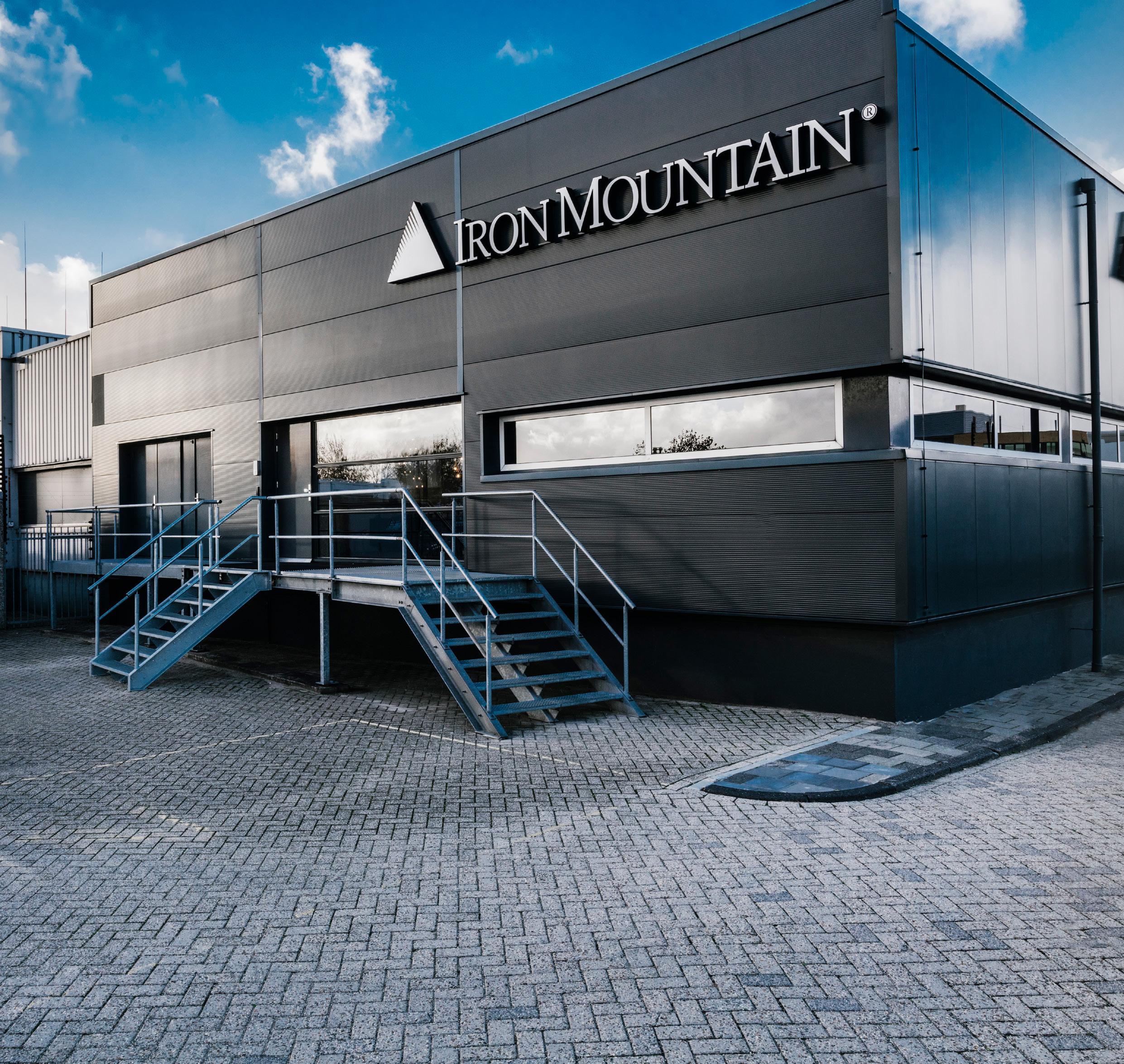



TITLE: EMEA LEADER
SUSTAINABILITY SERVICES
COMPANY: IBM
LOCATION: GERMANY
A Harvard University graduate, Elisabeth Goos gained a Certificate in Sociology and World History, which is one of many further accreditations to support her career. With previous experience from Capgemini, Roland Berger, and Deutsche Welle, Goos held a number of positions throughout the years, but over the past decade has focused on delivering digital strategy and sustainable transformation across multiple expert teams.

Firms are responsible for managing the emissions of their assets, such as premises, energy grid infrastructure, vehicles, and industrial equipment that contribute to the overall sustainability achievements of their operations.
“This alone, however, isn’t enough. Businesses and policymakers must also ensure they are working together so that infrastructure and assets remain connected across the traditional boundaries of corporate enterprise,” says Goos.
AI manages utility sustainability strategically Though consumption is at the mercy of infrastructure and the ability to transfer lossless electricity, managing where that energy is used and how much is almost impossible on an industrial scale. Not only will AI determine where the consumption is at its highest, but optimise the infrastructure and operational processes to ensure the most cost-effective, low-consumption energy usage for an organisation.
According to Goos, there are several methods that intelligent solutions can manage assets in this way.
“Software can now accurately predict how much energy assets require, be it a water pump or a lighting system, which ultimately means that companies can dial up and dial down energy requirements,” says Goos.

“At IBM for example, the implementation of an IoT and analytics across 190 buildings helped identify energy conservation opportunities. This resulted in the avoidance of 3,400MWh of energy and US$356,000 in expense. These savings are critical, especially amid the current energy crisis.”
AI will also factor in external sources of data to determine the best possible use of energy resources, such as weather – a major factor in electricity consumption and the purchase of energy. There are also applications that support road networks, which could realise more efficiency or be applied to EVs as they are introduced.
“IoT and AI combined with proprietary and third-party geospatial information can help monitor, predict and avoid disruptions on the road. This helps to plot the most efficient routes and reduce CO2 emissions from vehicles. The benefits that can be reaped from more intelligent assets can have vastly positive impacts on everyday life and the societal benefits are huge,” says Goos.
Speaking of everyday life, AI is already monitoring energy usage in homes. The introduction of smart metres is intrinsically linked to reduced living costs, which is crucial as they rise significantly across the globe.

These solutions will only grow as time goes on and even incorporate mobility into the home energy grid to achieve further cost savings by leveraging overnight rates with bi-directional charging.
“The global smart metre market is set to grow in the coming years, driven by targets set by the energy regulators,” says Tal Ben-Shahar, VP Product Management at Gentrack.


“In 2020, approximately 150m smart electricity meters were installed in Europe, and, according to Berg insights, this number will increase to 227m units by 2026.”

Smart metre installation creates an abundance of data – particularly for utility firms – that will allow wider reduction in energy demand. On the other hand, data acquired by smart meters will enable consumers to optimise home networks based on trends in their daily lives – solutions will predict when they will charge their cars, use their appliances, and turn on the heating based on past data.
“From a billing perspective, customers who opt to invest in renewable energy generation for their homes will now expect to see a thorough breakdown of the energy they use and generate from their suppliers,” says Ben-Shahar.
“For many customers, the underlying driver will be a desire to ‘go green’ so further billing personalisation will also be in demand – from carbon saved or equivalent in trees planted. This kind of information is emotive and exciting for customers looking to engage in an industry that has struggled to drive engagement.”
ELISABETH GOOS
EMEA LEADER SUSTAINABILITY SERVICES, IBM
“Corporate Net Zero pledges are part of daily business. In the past 18 months alone, they have increased fourfold, which is great to see”
Energy is one of the most crucial commodities in the modern world. It powers homes, supports commerce, enables mobility and, in some of the more life-changing cases, backs hospitals in saving lives. It is the backbone of society and is instrumental in allowing communities to survive and thrive, while enabling the economy to fulfil its highest potential.
It’s safe to say energy has become a valuable necessity, dealt between countries, states, towns and cities. But the industry is venturing towards more digital means of operation, such as the adoption of IoT in its ecosystems to track, assess and manage energy, while blockchain technologies are being incorporated into the energy distribution system.

All of these digital devices operating at the edge of the energy system leave the industry prone to cyber attacks. The high value of energy combined with an increasing number of individual entry points make the energy sector as vulnerable as any other. The energy network not only piques the interest of ransomware attackers, but is also prone to nation-state disruption with the potential to weaken economies or create blackouts – which could all change the course of history.
While this may seem like a dramatic entry to the top of cybersecurity and how it feeds into energy prosperity for the better, it’s necessary to recognise the importance of electricity in the ecosystem of the future.
The energy sector is a tough one to secure thanks to its increased digital presence, but teams must act to ensure national safety and global sustainability



Ensuring you have the best partner at your side.


“As is the case with almost all industries, the energy sector is becoming increasingly digitised and digitalised,” says Mark Clark, VP Sales EMEA North at Onapsis.


“While that can be transformative from a monitoring, performance, and operations and maintenance perspective, it also comes with security risks. Each newly-digitalised channel or function is another avenue for cyber criminals to exploit.”
There’s one word that springs to mind when thinking about cybersecurity and its applications in energy: resilience. As threats are inflicted on the sector by more sophisticated systems and organisations – such as nation-state attacks – incorporating a cyber strategy into energy operations is an act of national security.



There’s also a further element to be discussed here; talks of the environment and the impacts to be had if energy, especially the renewables sector, is disrupted. More organisations in the solar power sector will begin to receive further investment to lift up the industry and topple the effects of fossil fuels on the planet.

TITLE: VP SALES EMEA NORTH
COMPANY: ONAPSIS

LOCATION: UNITED KINGDOM
With just over 18 months with Onapsis, Mark Clark is a seasoned sales professional with decades supporting the technology sector and driving implementation of data-driven systems. Now backing the energy sector from a cybersecurity perspective, Clark is challenged with safeguarding businesscritical applications for corporations, and is well versed in delivering continuous threat management to a number of highly respective industry clients.

Energy resilience enables progress towards a more stable environment and social prosperity for more communities across the globe. If reliance on resources shifts, this will increase its importance and thus raise its profile even further. The deadline for global action against climate change is already tight and any disruption from a cyber attack could undo hope of emissions being reduced by the agreed finish lines.
“From an environmental perspective, I’d argue that having the right cybersecurity measures in place is incredibly important,” Clark says.
“That’s because breaches by cyber criminals can be environmentally

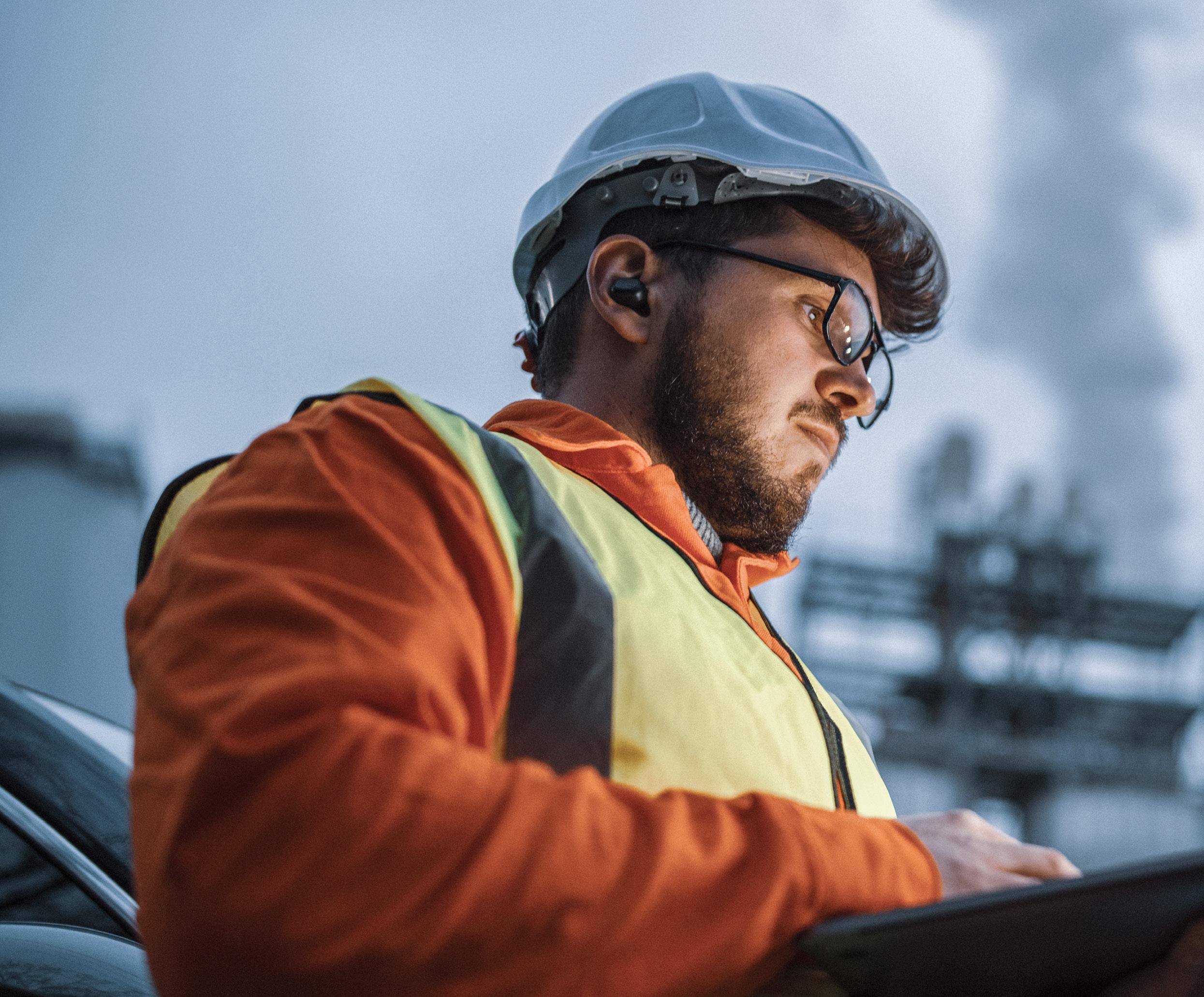
destructive, particularly in a sector as sensitive as energy. There are obvious examples of why this is the case. Were cybercriminals to take out a renewable energy project, for example, energy providers might be forced to revert to older forms of energy.”

There is more to resilience than simply adopting new cybersecurity systems to manage the functions themselves. Understanding how they work and where a business can support their provider will enable them to become more proficient in the process.
Some of the actions to take or strategies to implement from a business perspective include:
Provide training and education to staff members regarding prevalent methods employed by malicious individuals, such as phishing and spear phishing, as well as promoting cybersecurity best practices. This encompasses both technical and procedural measures, emphasising their significance and demonstrating how they contribute to the reduction of cyber risks.
Enforce robust access controls, such as multi-factor authentication (MFA) and privileged access management, to prevent unauthorised entry into vital systems.
Engaging in routine vulnerability scanning, penetration testing and simulations of cyber attacks can aid in the identification of vulnerabilities and deficiencies within security infrastructure and process-based controls. This proactive approach enables timely remediation of any issues discovered.

Creating, implementing and conducting regular testing of a business continuity and incident response plan can enhance the speed of recovery and mitigate the impact and harm resulting from a cyber attack.

According to IBM’s X-Force Threat Intelligence Index:


• 38% of incidents handled by its X-Force responders were aided by backdoor weaknesses
• 26% of incidents were result of compromised public-facing applications



• 27% of incidents led to extortion, such as data leakage, ransomware, compromised emails and denial of service
Providing insight into these tasks for enabling better energy cybersecurity is the Red Team Expert at CovertSwarm, Matt Watson, who says: “With threat actors now actively developing tools that specifically target infrastructure such as industrial control systems, the requirement for organisations to invest in cybersecurity to ensure they are equipped with the necessary tools, skills and expertise to identify and protect against cyber-attacks is critical”.
When it comes to corporate and national security, breaches can result in major disruption to global supply chains and, in turn, the public. From the perspective of the environment, each level of interruption to the energy sector could have catastrophic effects in the long term as progress to net-zero emissions is delayed significantly by the temporary reintroduction of fossil fuels.


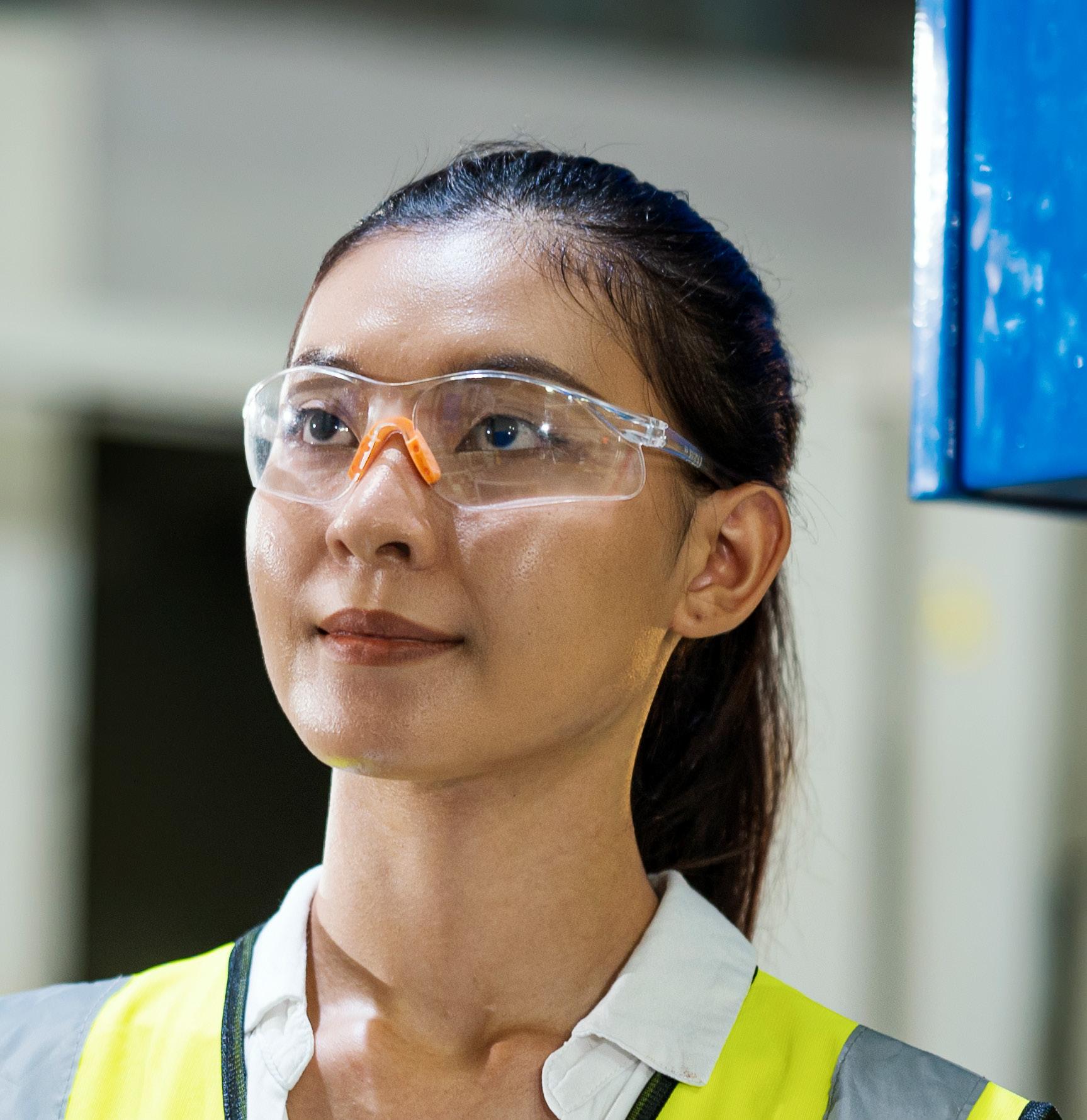

The list of top 10 energy companies is becoming more diverse in its actions as sustainability provokes portfolio shifts for traditional oil and gas firms
 WRITTEN BY: TOM SWALLOW
WRITTEN BY: TOM SWALLOW
Energy must continue to evolve as sustainability takes precedence over the most lucrative industries on the planet. While oil and gas are still very much major resources in fueling economic prosperity and social equality, it’s important to recognise the shift in the industry as fossil fuel giants transition to renewable energy sources by mid-Century.
With that said, the Top 10 Energy Companies remain the most financially successful in the industry as they continue to support their economies and global energy trade.
TAQA
Market cap: US$101.01bn
TAQA’s journey in the energy sector dates back to 1998 when water and energy was privatised in Abu Dhabi, highlighting the criticality of resource security and provisions of power the the communities across the UAE.
Originally established as a publicly listed company on the Abu Dhabi Securities Exchange (ADX), the company has experienced significant expansion and has become a diverse operator within the energy sector — now spanning Canada, Ghana, India, Iraq, Morocco, Netherlands, Oman, Saudi Arabia, the UK, and the US.


BP

Market cap: US$103.46bn
One of the leading organisations in the energy sector, and one heavily involved in developing sustainable solutions for future lifestyle and mobility. The company is equipping itself with renewable energy revenue streams to not only provide economic stability, but also encourage a sustainable outlook on energy consumption. Aside from energy generation, the company supplies its own EV chargers through the BP Pulse name and it continues to build its network of services.

ConocoPhillips

Market cap: US$123.46bn
ConocoPhillips is dedicated to oil and natural gas exploration in a responsible and optimal way. The company is built on extraction and delivery of valuable resources to keep the world moving and requires a combination of ingenuity, advanced technologies, and high investments.
Through a collaborative and innovative approach to oil and gas, ConocoPhillips strives to create products that enhance the quality of lives across the globe while generating economic returns.
07
TotalEnergies

Market cap: US$142.82bn
TotalEnergies made sustainable development an integral part of its strategy, projects, and operations as it aims to enhance people’s well-being and serve as a leading advocate for the United Nation’s Sustainable Development Goals.

Embracing a transformative approach to energy, the company is actively reinventing the energy sector to establish itself as a global leader in the transition towards sustainable energy — driving it towards its goal of net-zero carbon emissions by 2050.

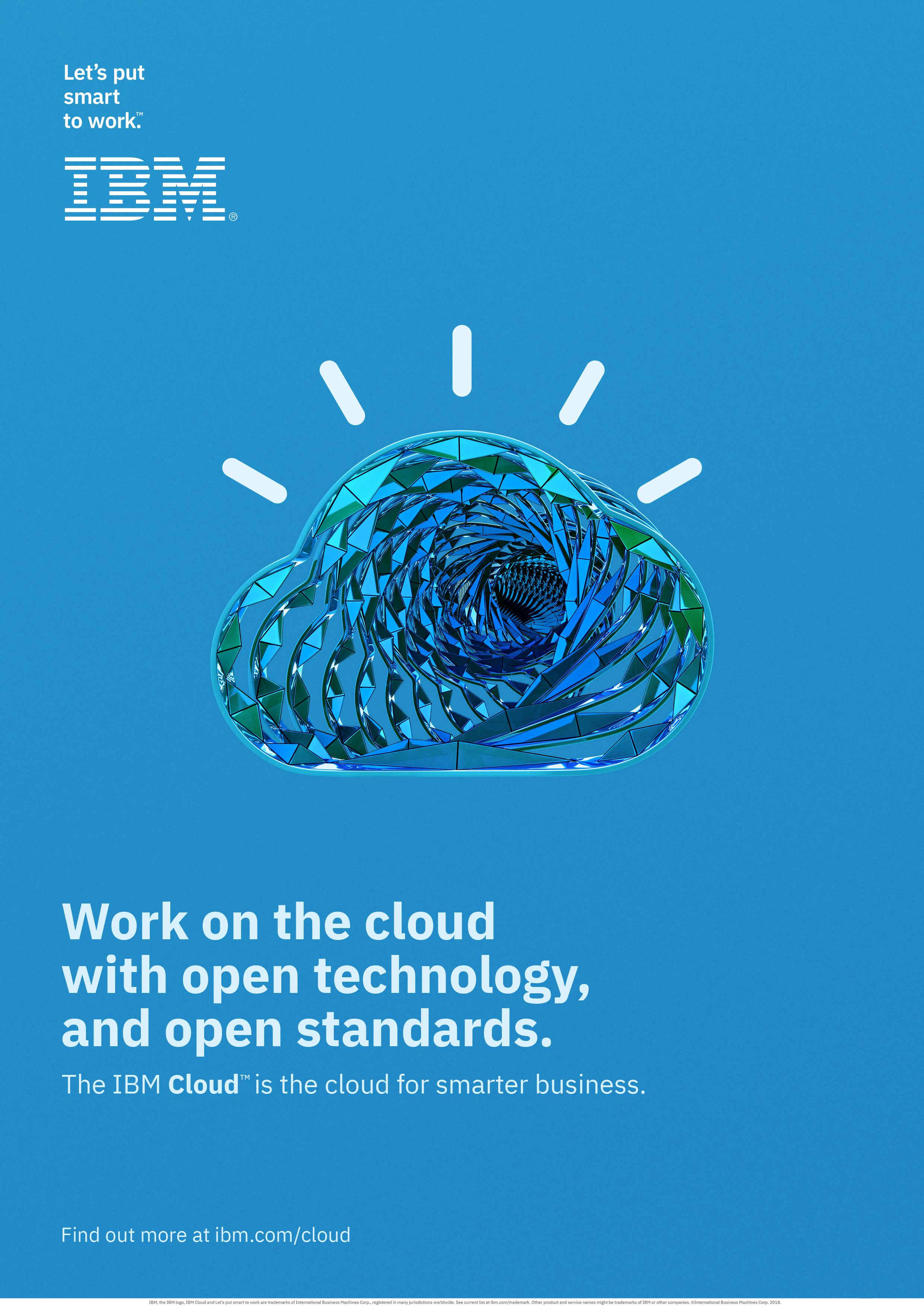
06

Nextera Energy


Market cap: US$151.27bn
As a major investor in American infrastructure, Nextera Energy is committed to fueling the American dream through the energy sector. With a robust plan to invest US$50bn to US$55bn in new infrastructure projects by 2022, the company plays a key role in shaping the future energy landscape of the states. Nextera is determined to provide custom solutions to businesses to provide the maximum decarbonising potential inline with enterprise goals.

05 PetroChina Market cap: US$184.29bn
The China National Petroleum Corporate (CNPC) stands as a global giant in the oil and gas sector, while also holding a major position within China’s petrol power industry. Its petrol business, PetroChina is 80.25% controlled by the company and contributes 50 to 60% of China’s domestic oil and gas production, serving 83,527 km of domestic pipelines.

Shell Market cap: US$204.59bn

Shell is focusing on all the solutions of the future. With a stake in renewable energy and EV charging, the company is taking great strides to pull away from its heritage as a petroleum business. The company has its sights firmly set on the net-zero goal, which is set for 2050 as the company will require a number of years to rebuild as a renewable business and support electrification, as the growing trend, through its Shell Recharge company.

03
Chevron Market cap: US$291.16bn

One of Chevron’s most exciting endeavours this year can be seen in biofuel and, since 2021, the company has been working on renewable fuels to meet the needs of a climate-conscious world. Aside from this, Chevron is also driving interest in sustainable energy through its acquisition of the Renewable Energy Group (REG) in 2022.
Its renewable fuel products could see a 50% reduction in lifecycle greenhouse gas emissions in relation to conventional petroleum diesel products.

ExxonMobil Market cap: US$415.29bn
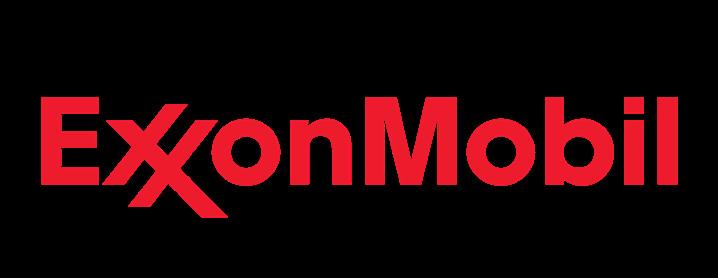
Majoring in oil, ExxonMobil has been highly successful over the past year with the second-highest recorded market cap and revenue of US$84.18bn in the first quarter of 2023. The company is more than just an energy provider though.
ExxonMobil ventures into more areas to meet the needs of a growing society and the planet, and by doing so led the business to achieve great strides in lower-emission transport, modern living material requirements, and industrial solutions delivery.

In June 2023, the company signed a carbon capture agreement with Nucor Corporation, marking a major step towards carbon neutrality and the ultimate goal of reducing emissions to net zero.





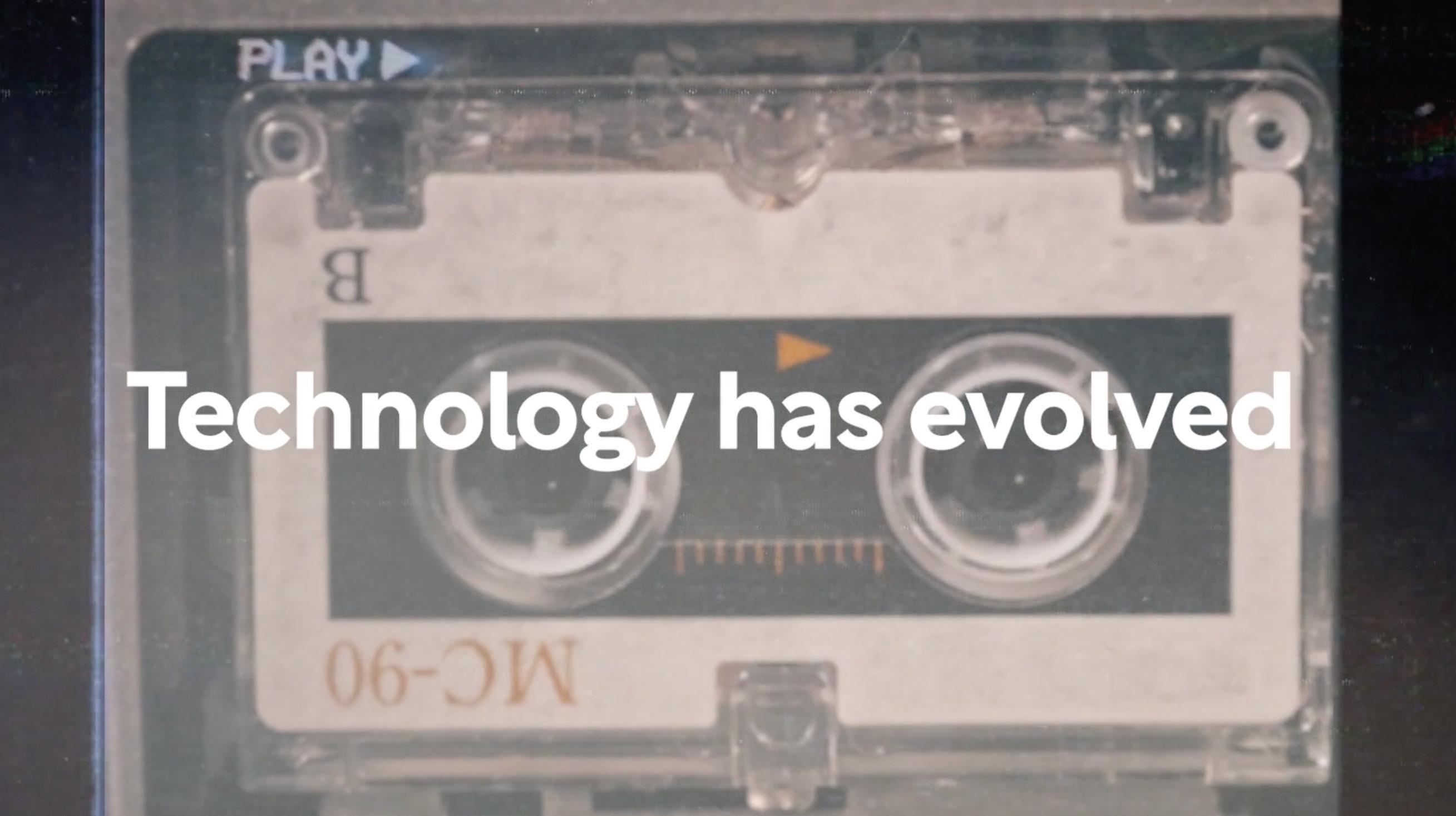

Saudi Aramco
Market cap: US$2.09tn
The leading energy company of the Middle East, and of this list, Saudi Aramco continues to grow as an energy firm and expand its efforts to reduce the carbon emissions of its operations. The year so far has been taken up by partnership acquisitions and growing implementation of climate-neutral solutions to build an energy ecosystem for the future.

Taking these strategies further, Saudi Aramco announced major partnership agreements with DHL Supply chain — in a joint venture Procurement and Logistics Hub — and with Samsung Electronics to accelerate the country’s digital transformation with 5G implementation.
Aramco also celebrated 90 years of business providing power to the globe.



6 - 7 September 2023
Business Design Centre, London
SPONSORSHIPS GET YOUR PASS